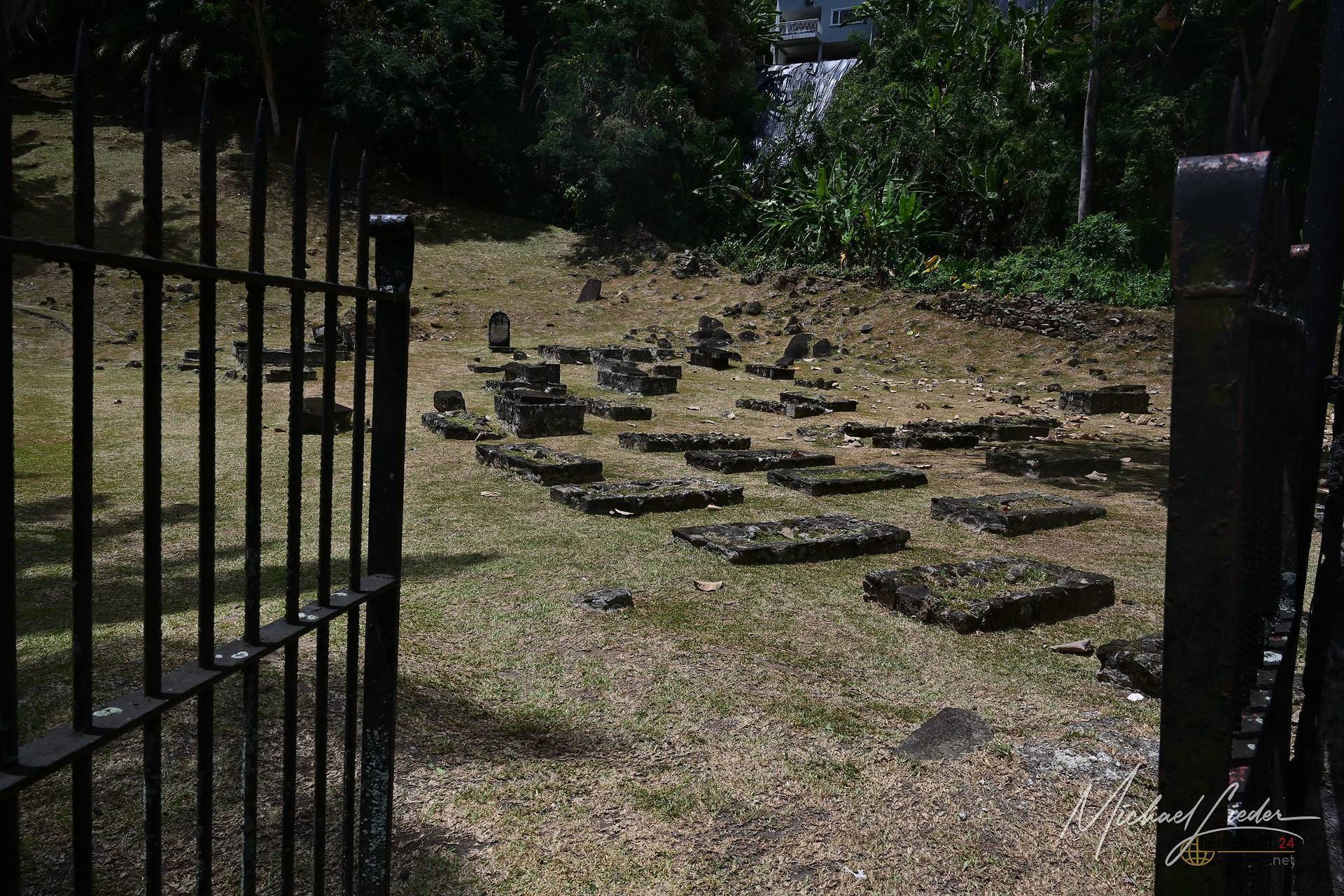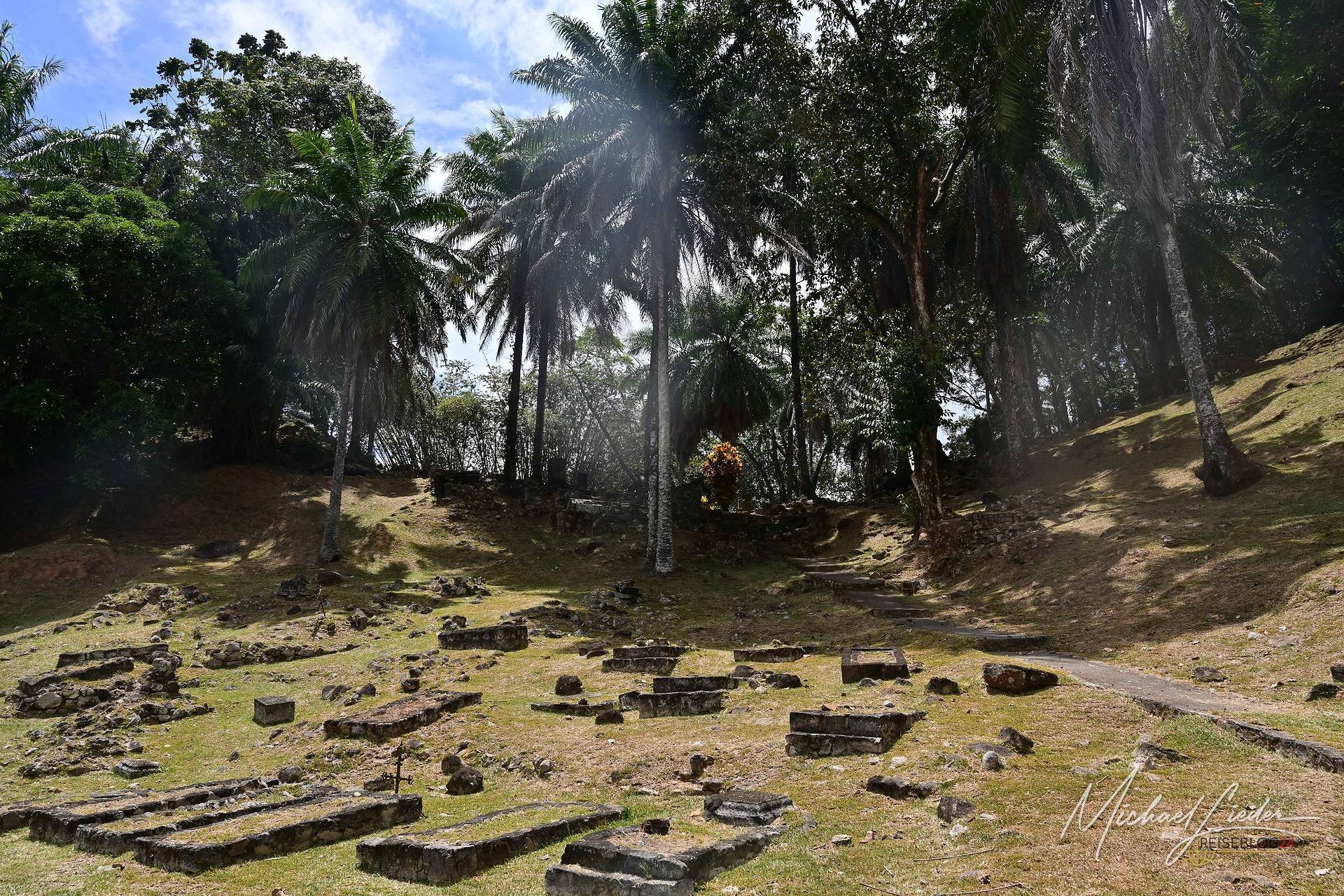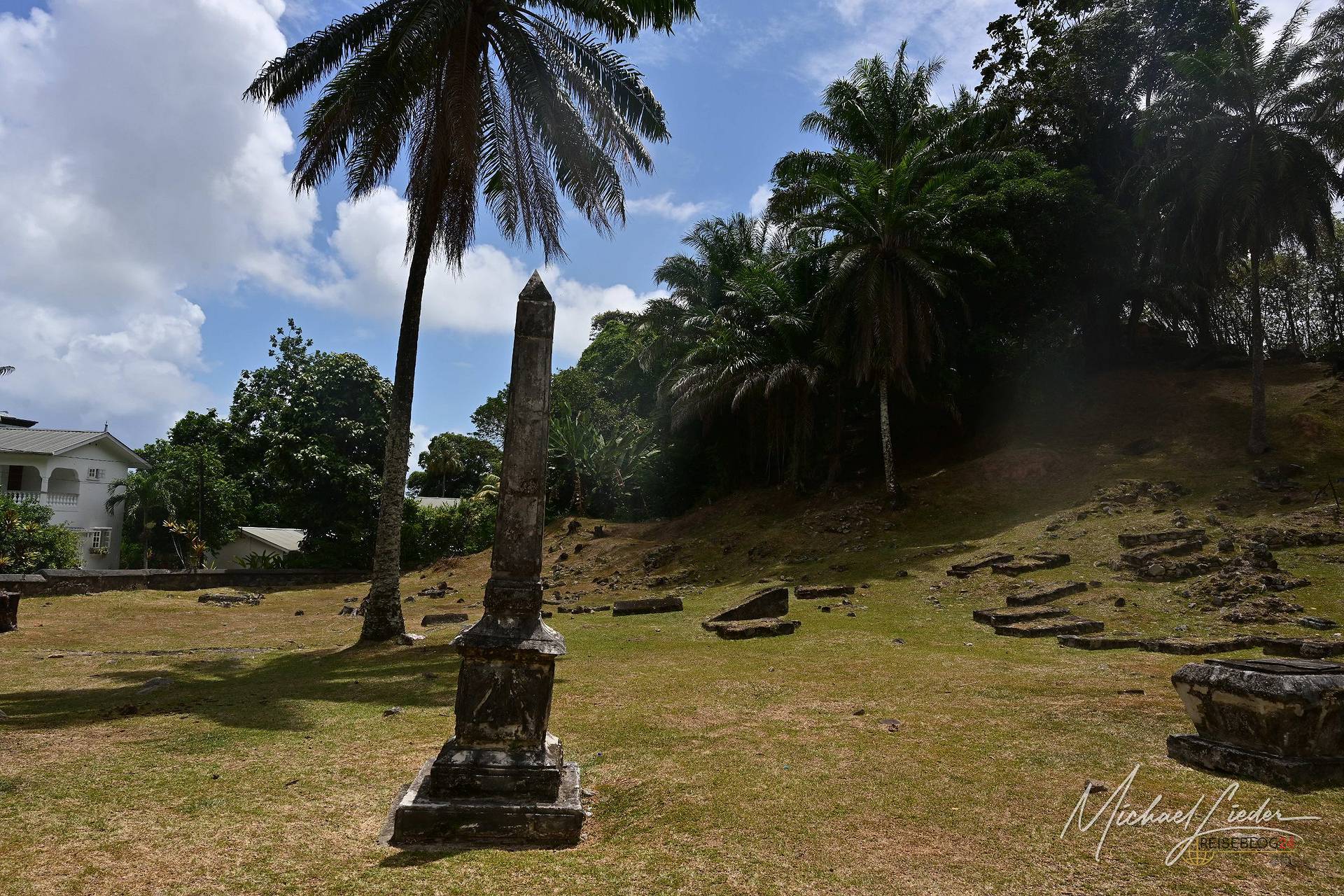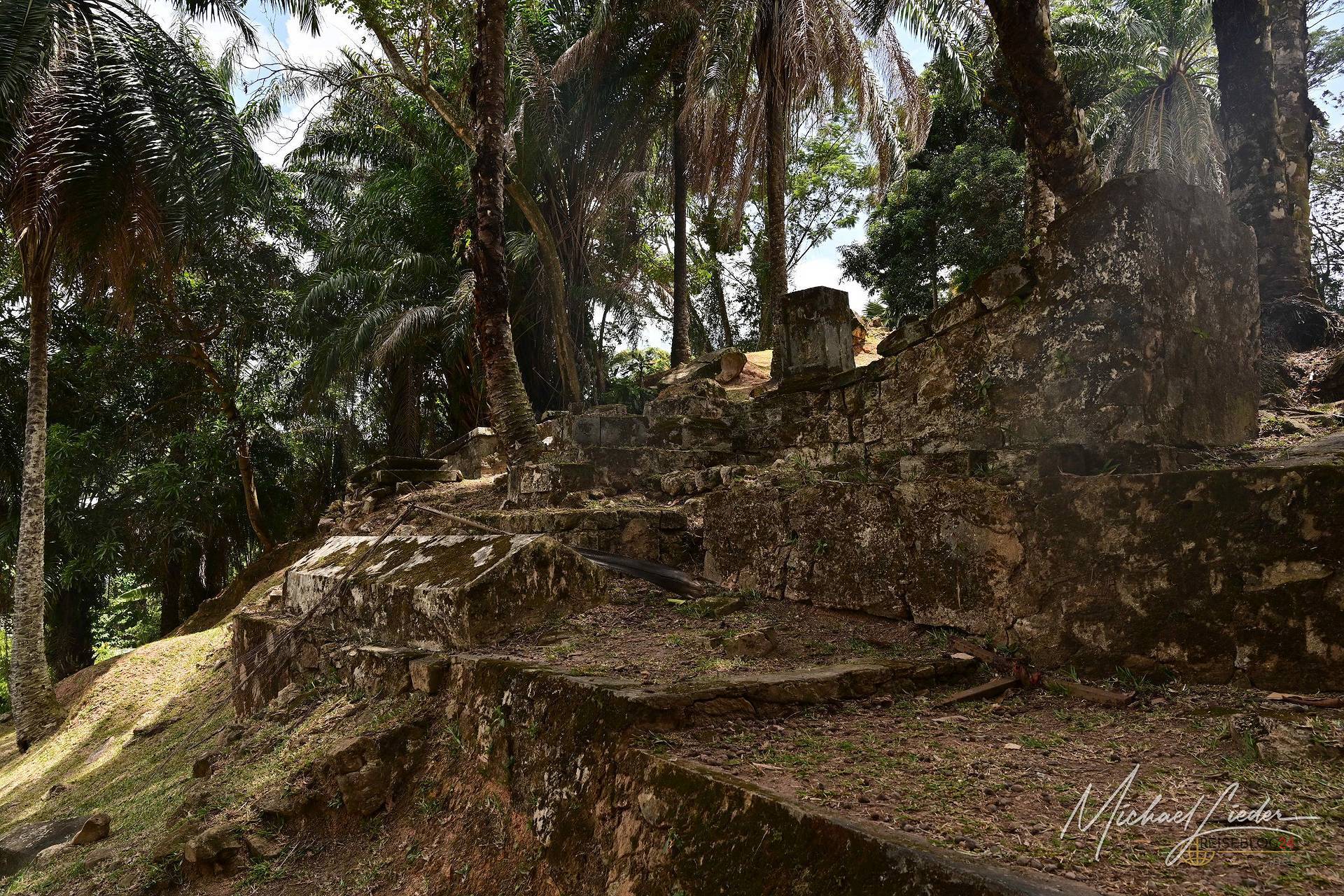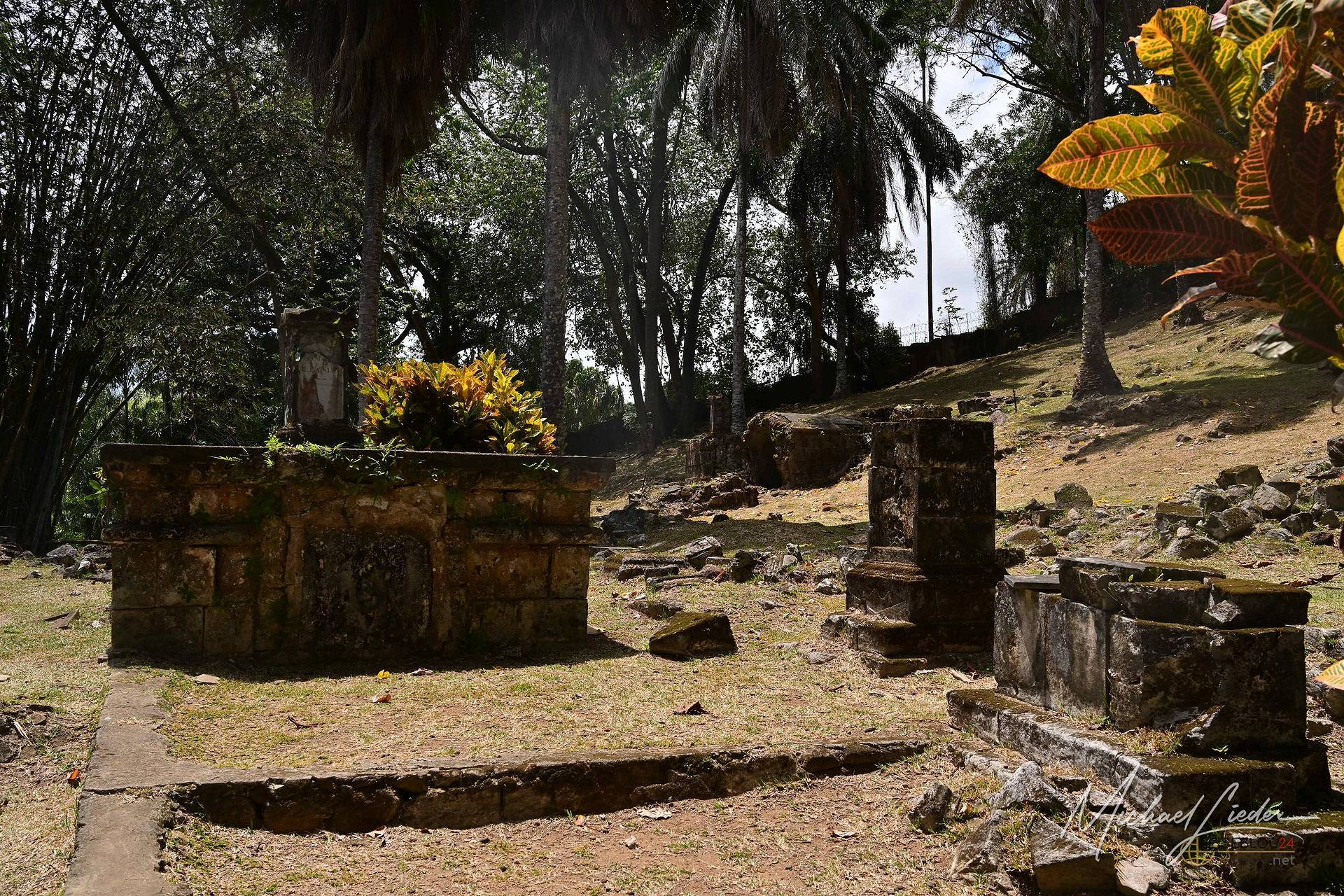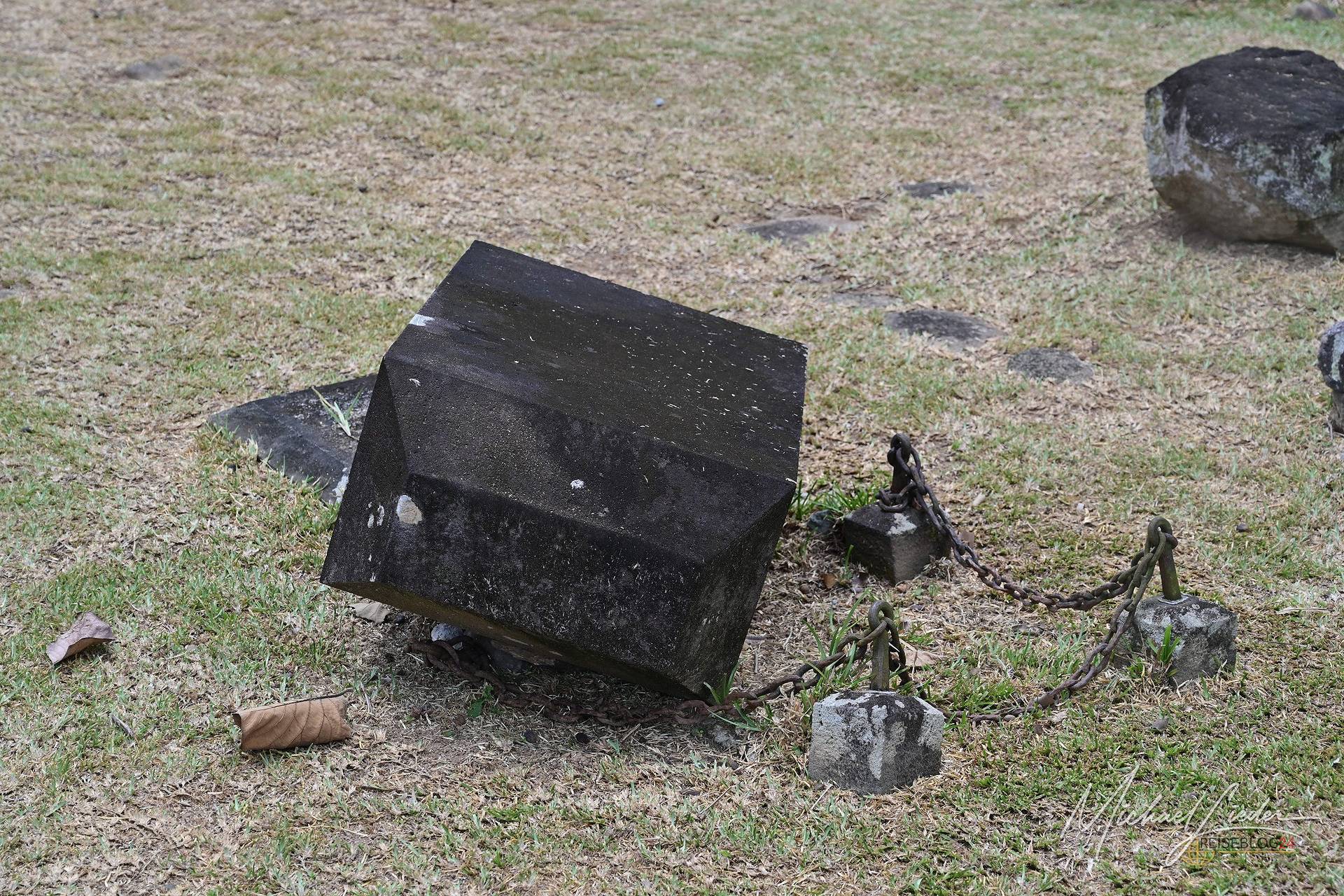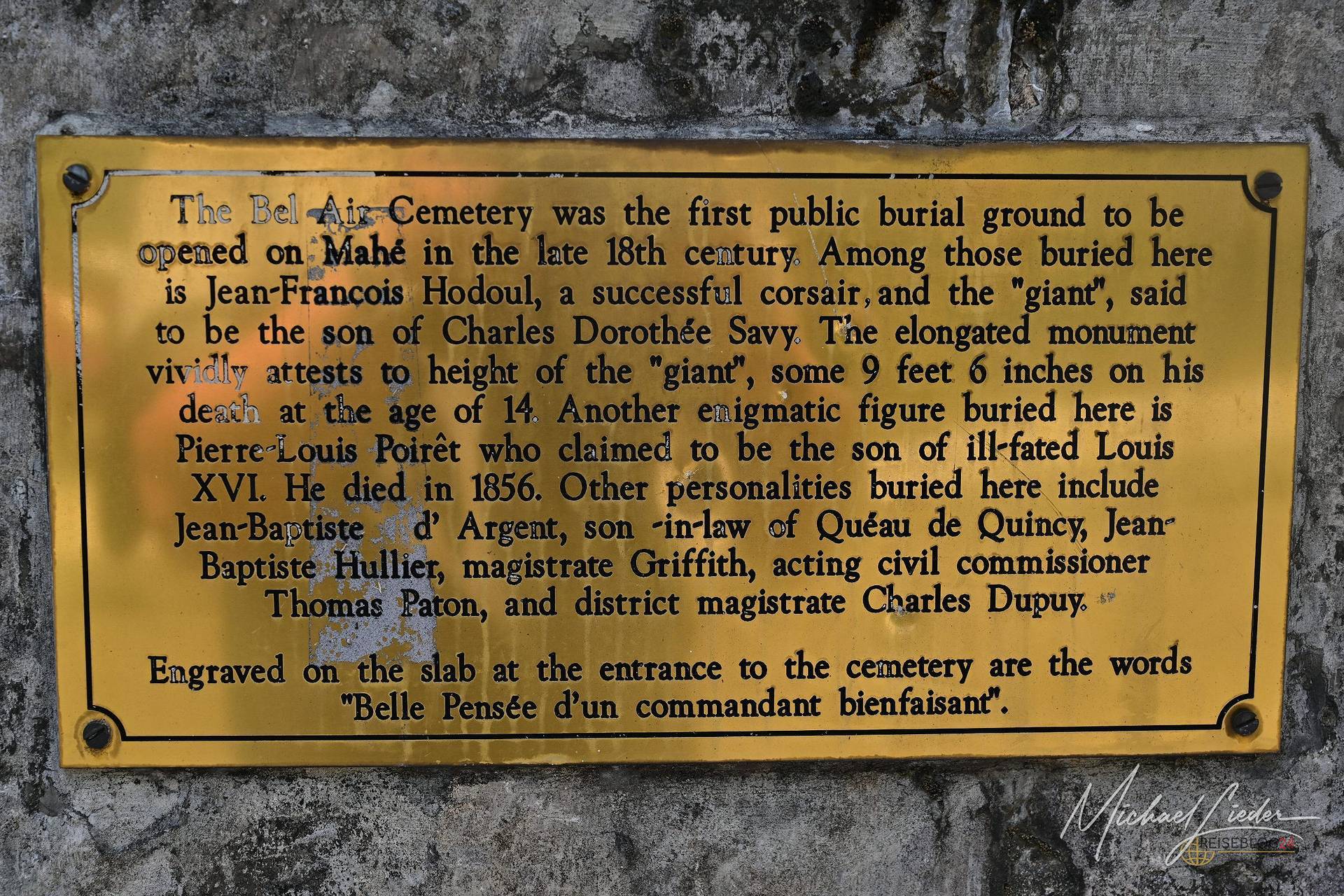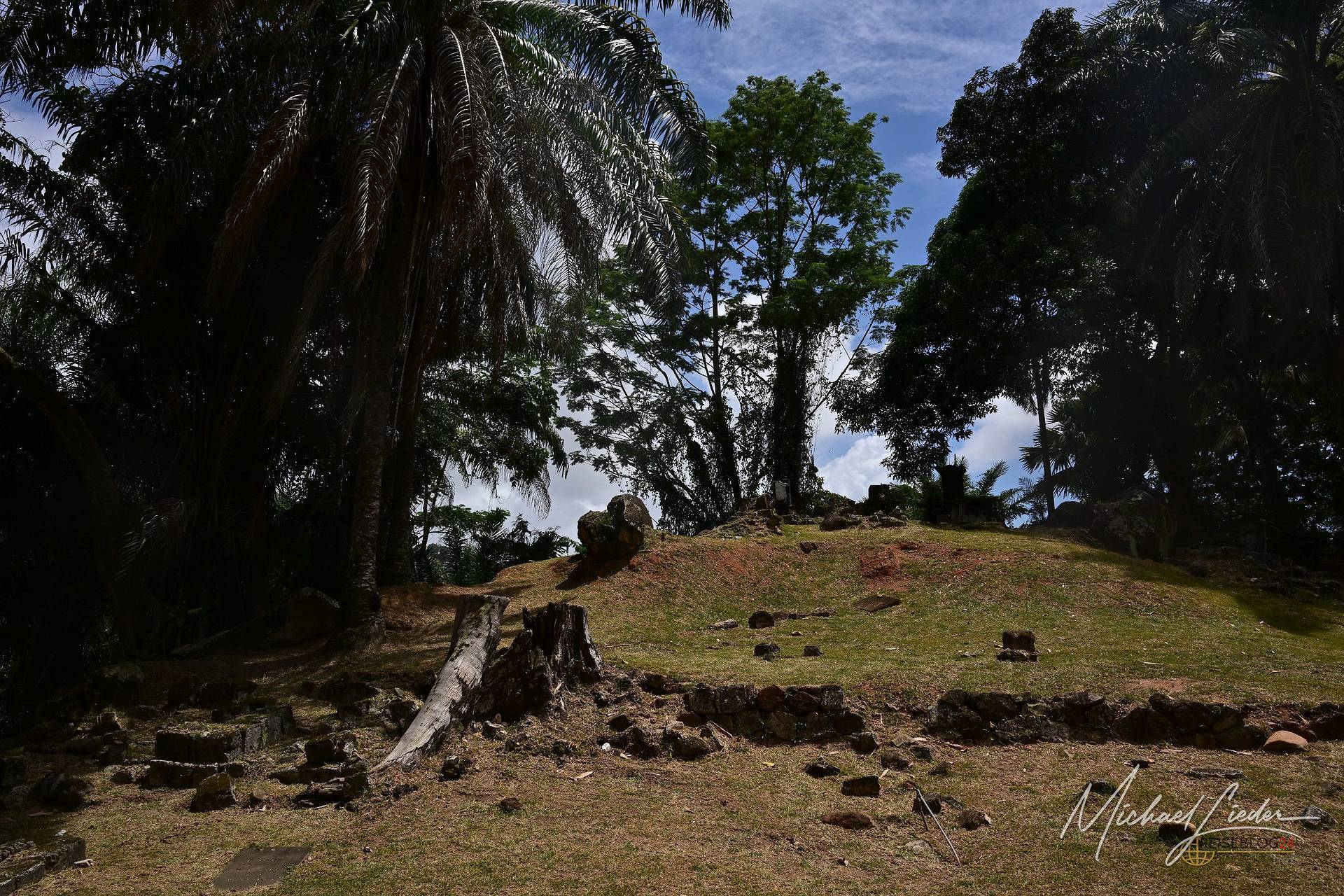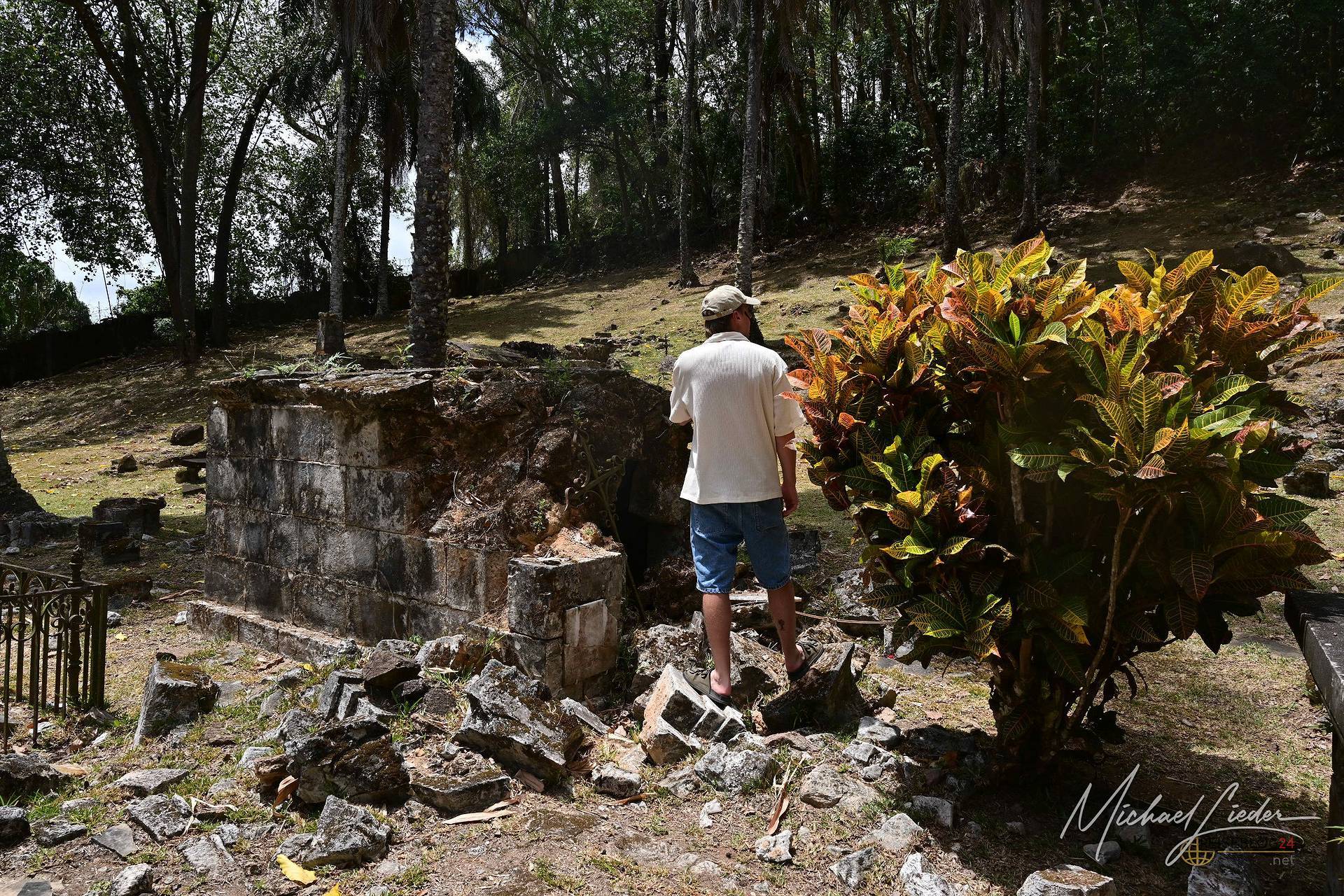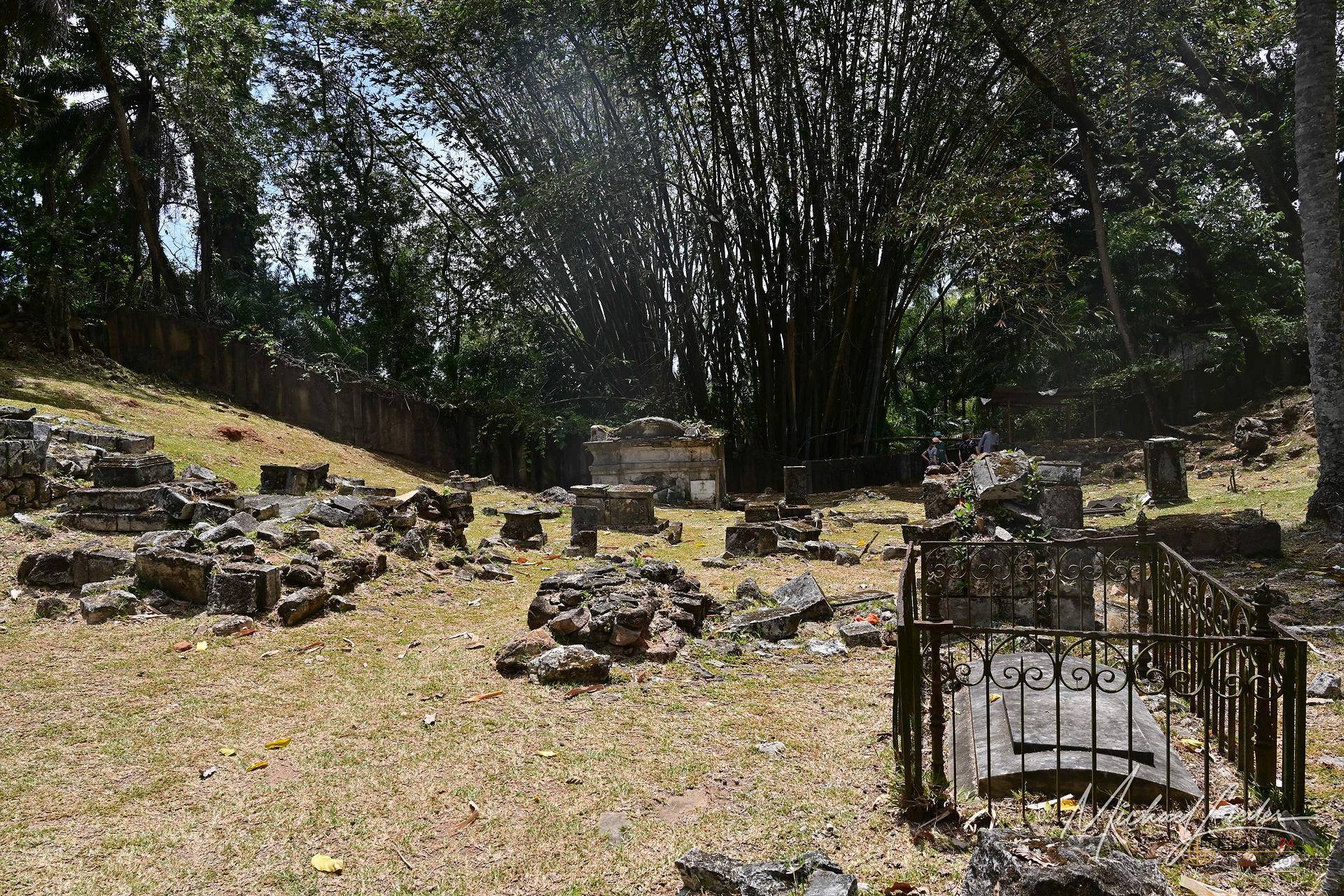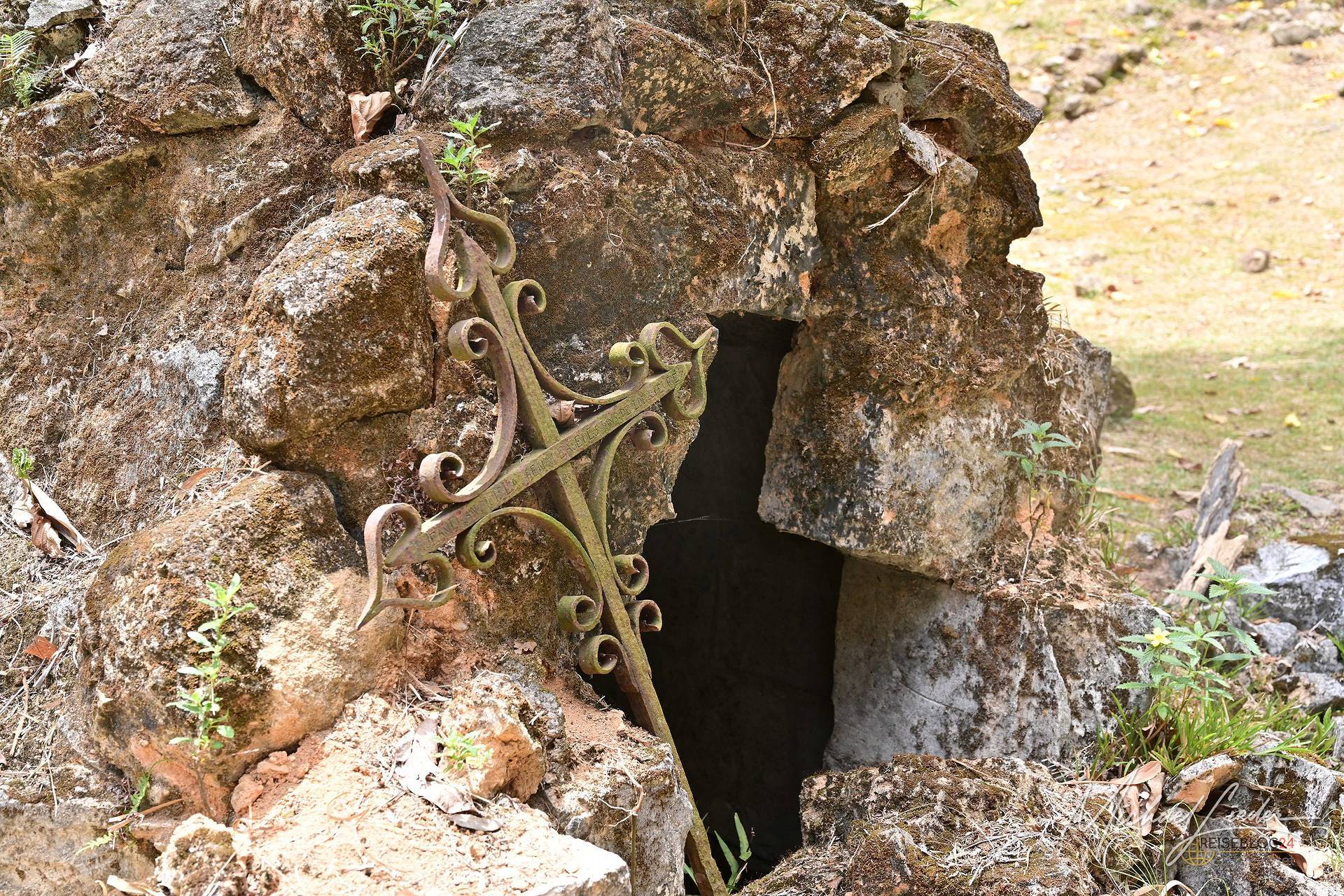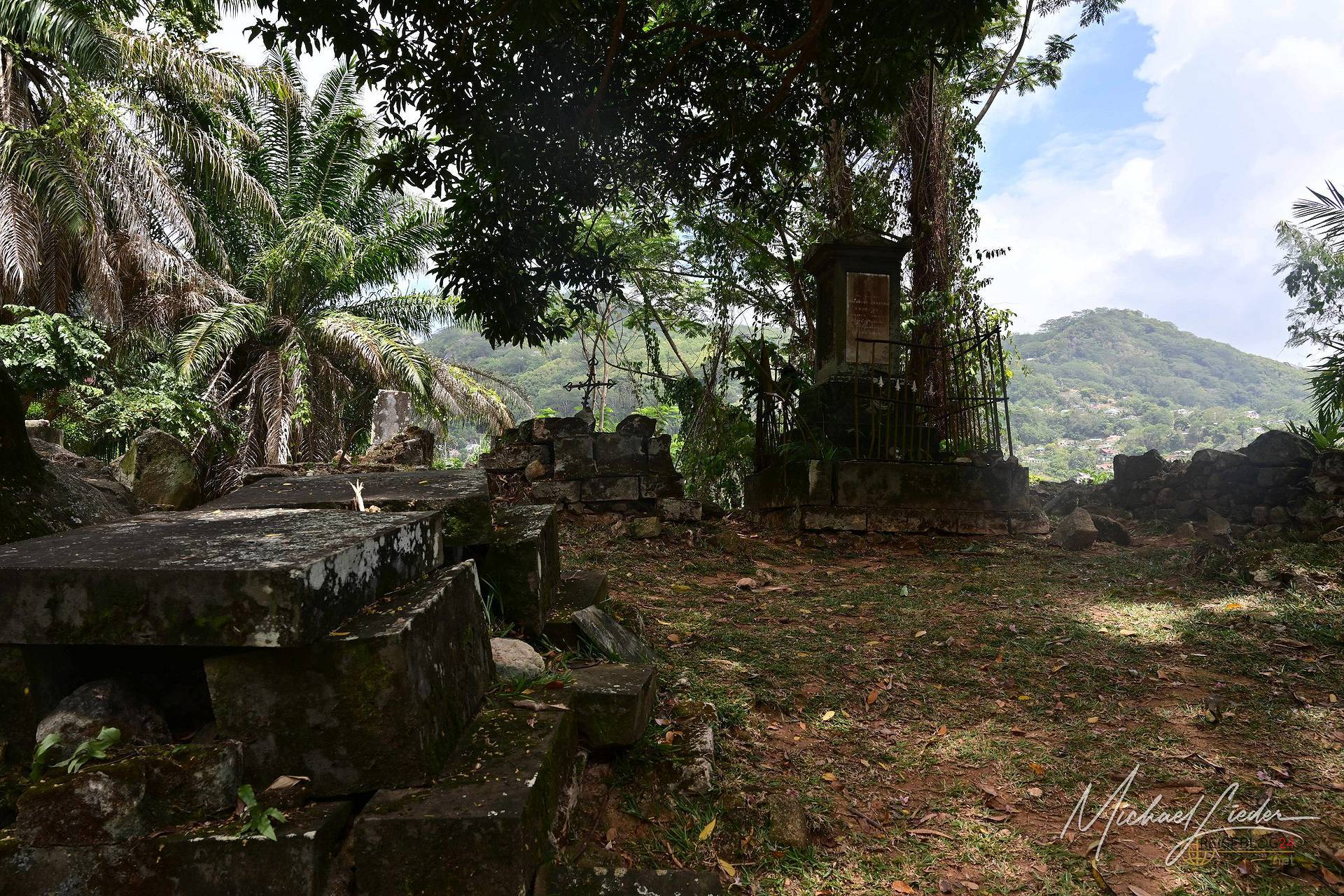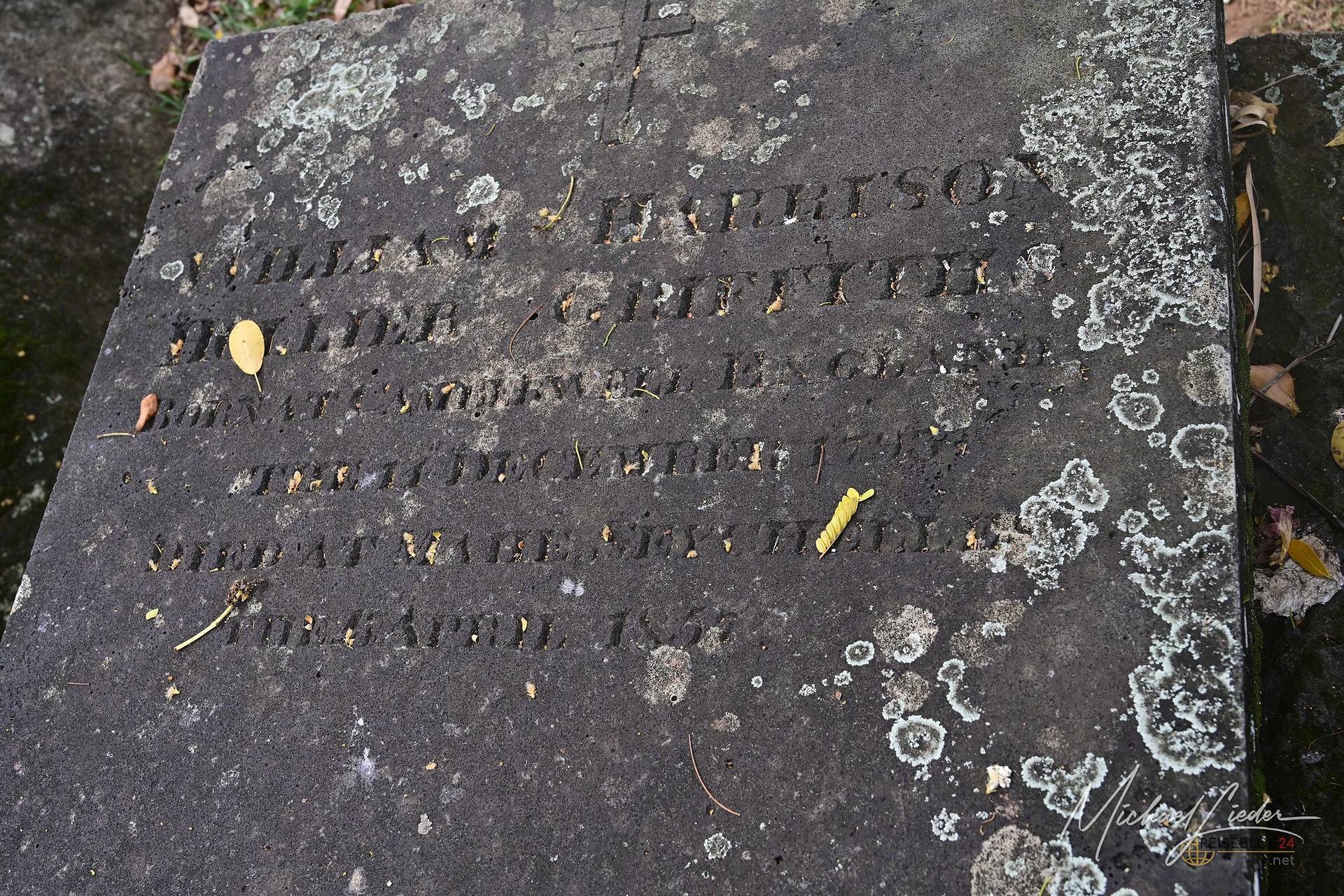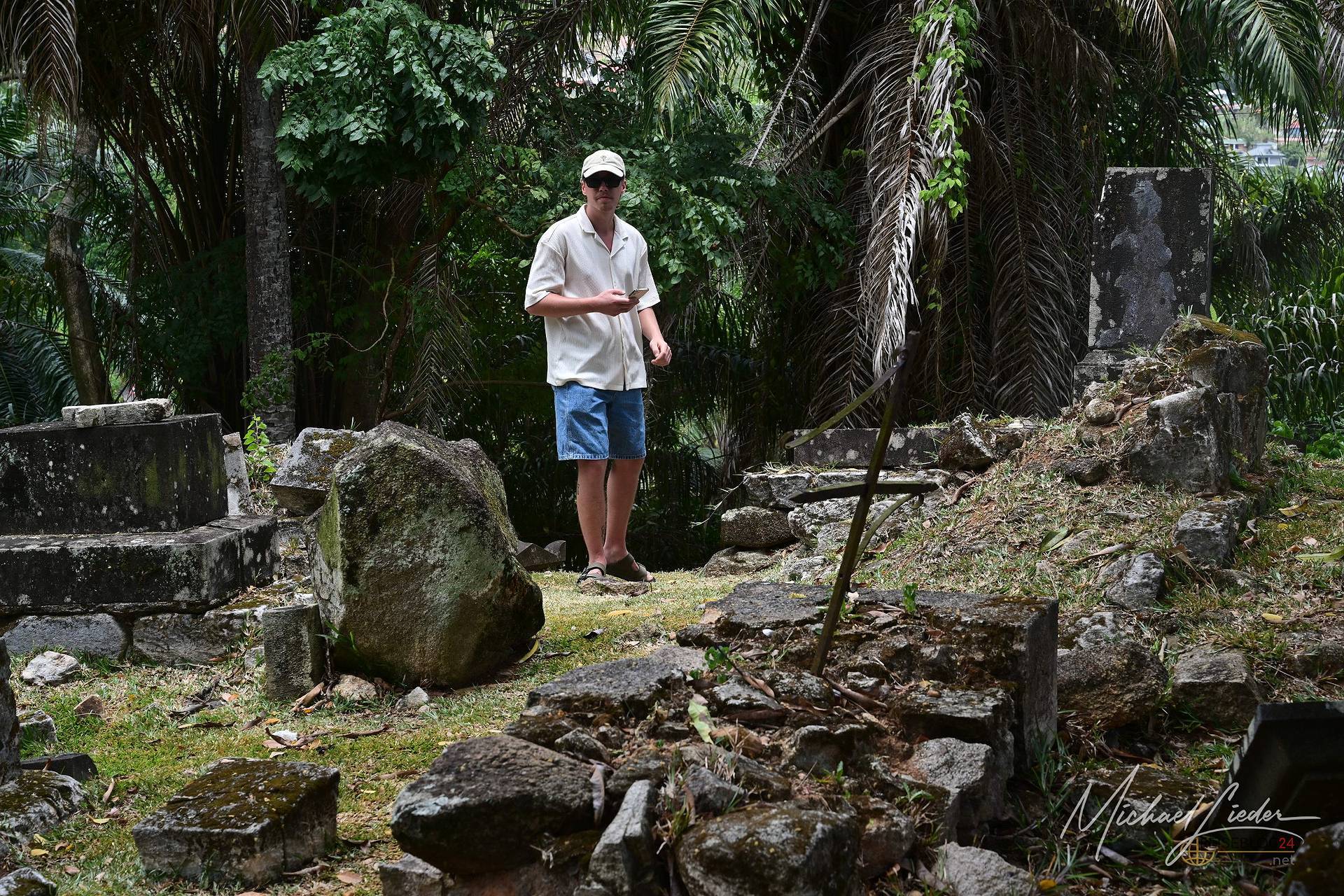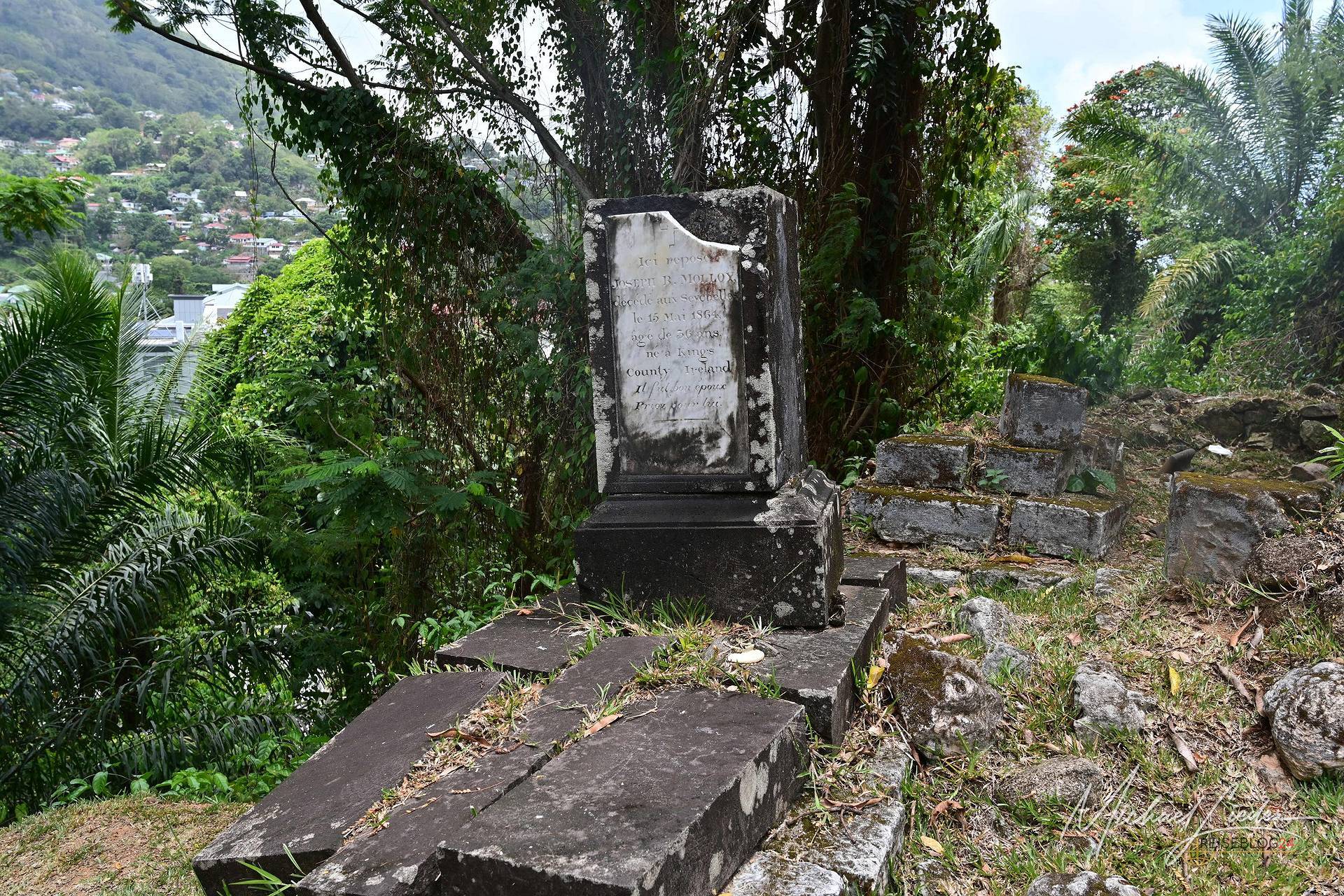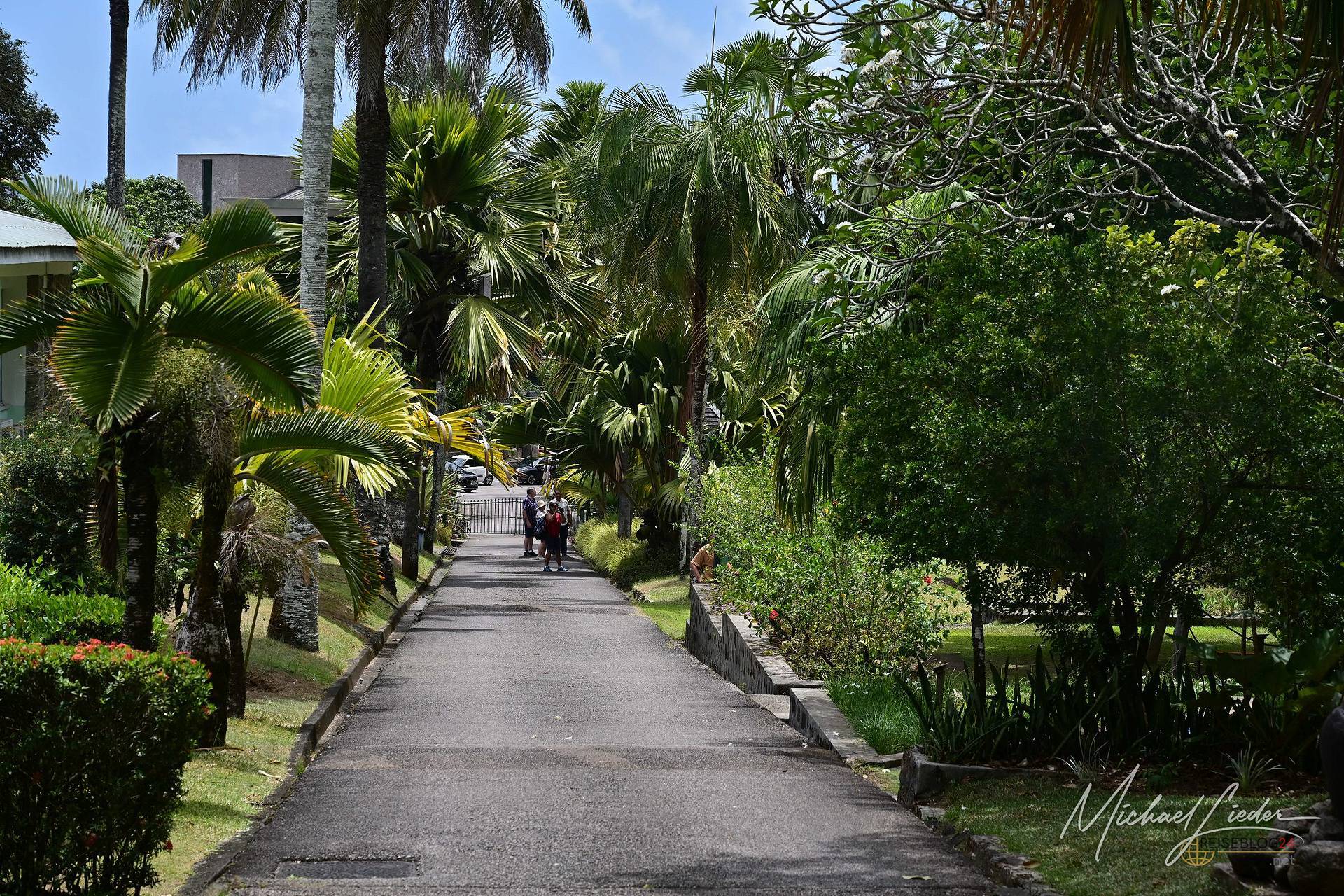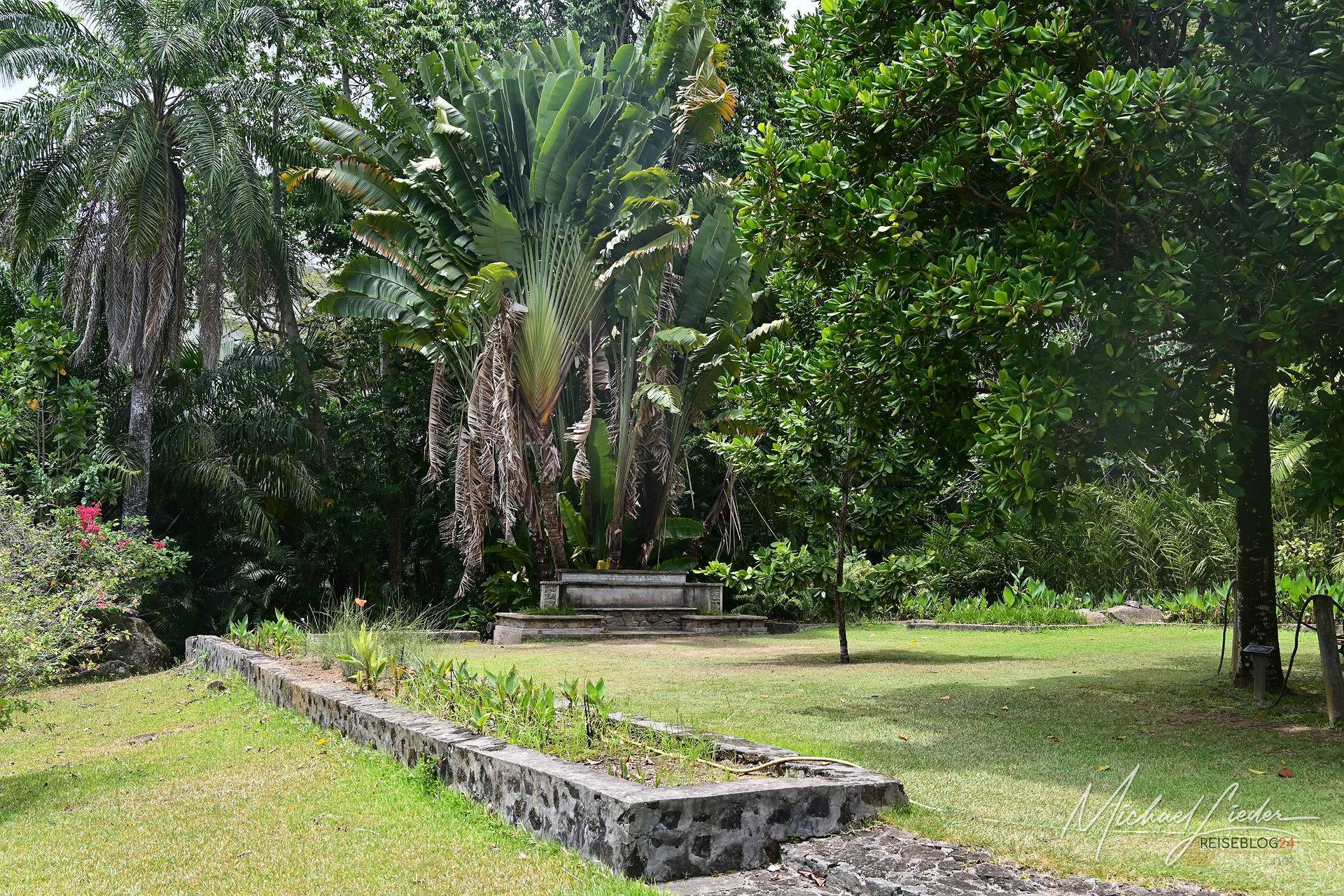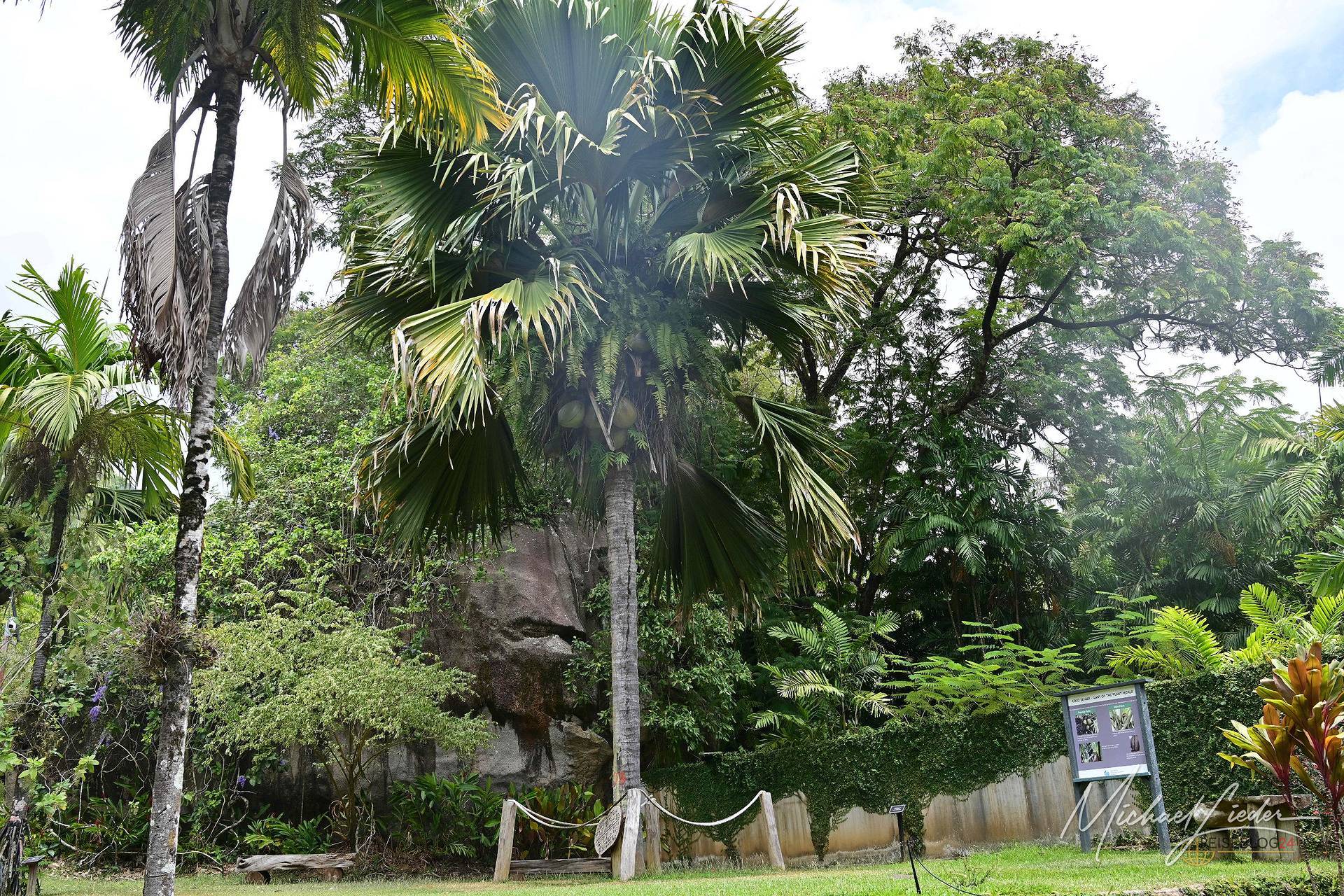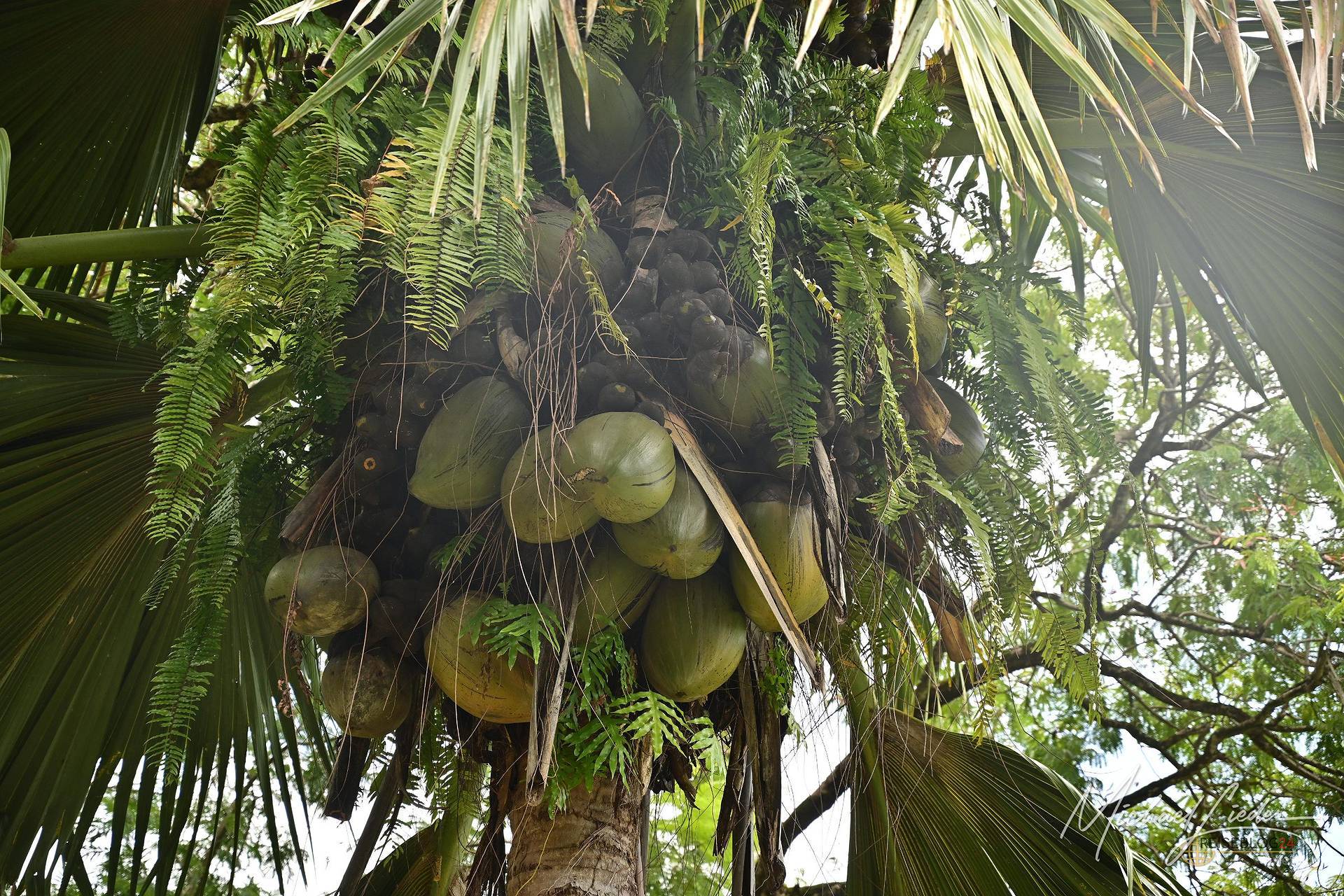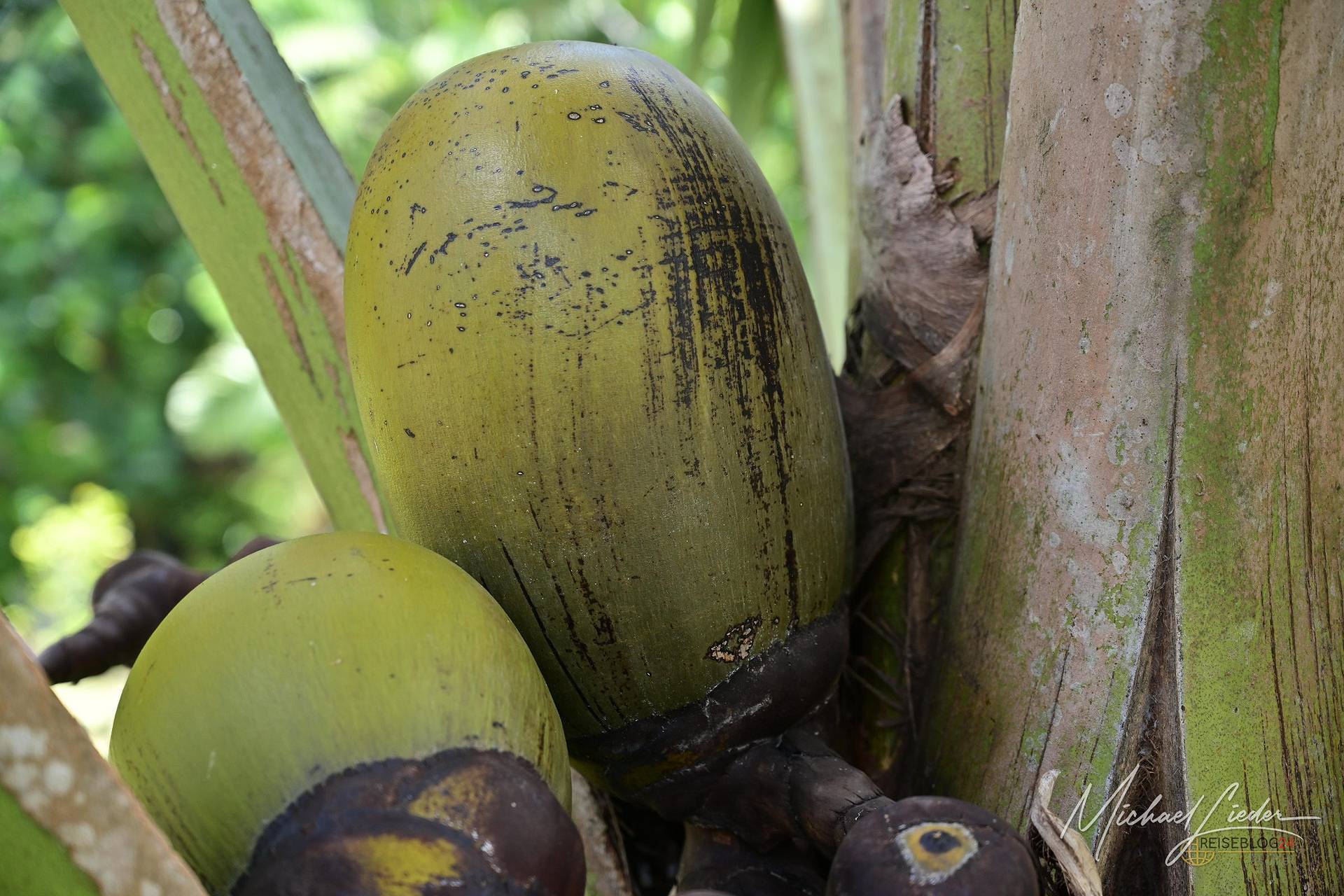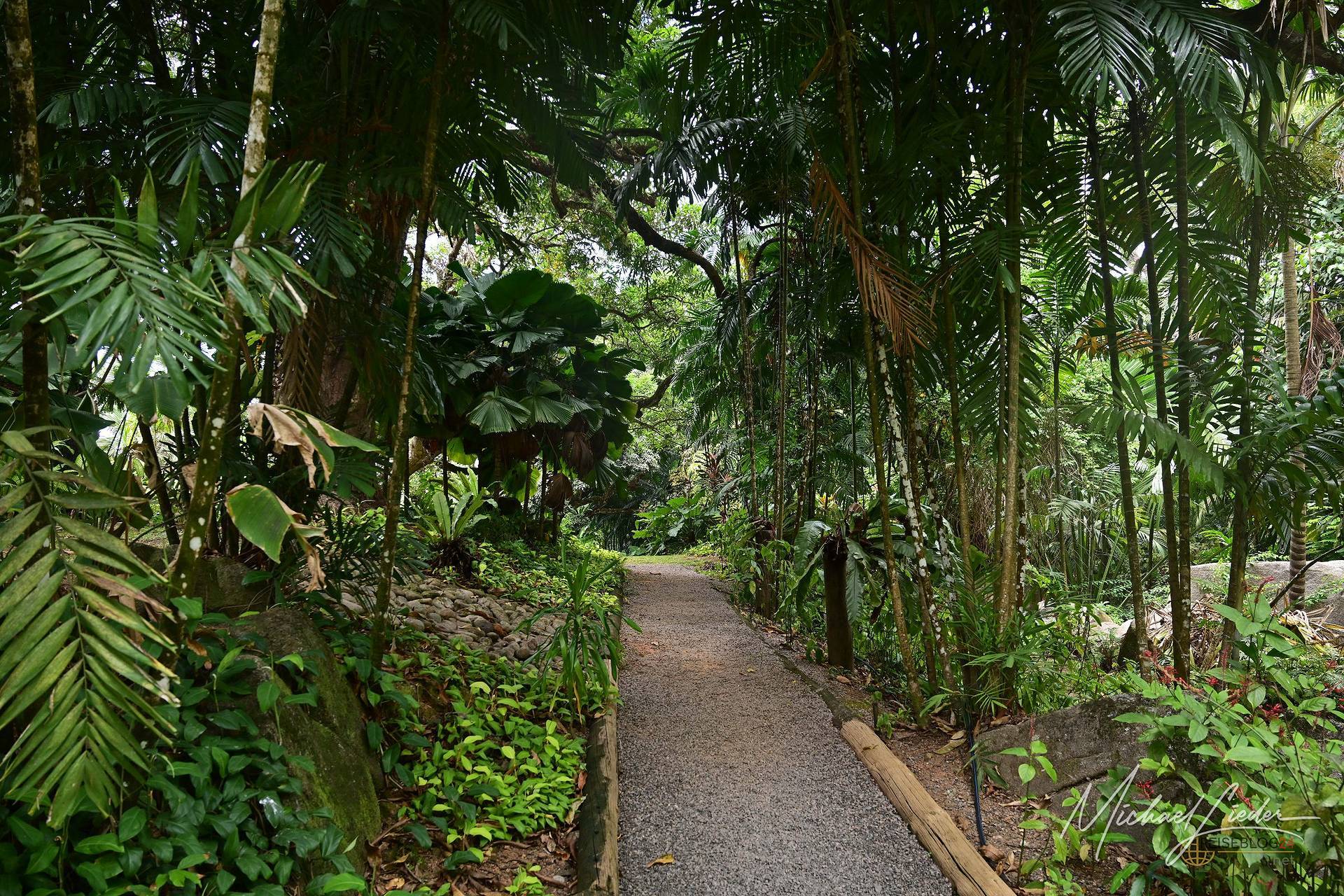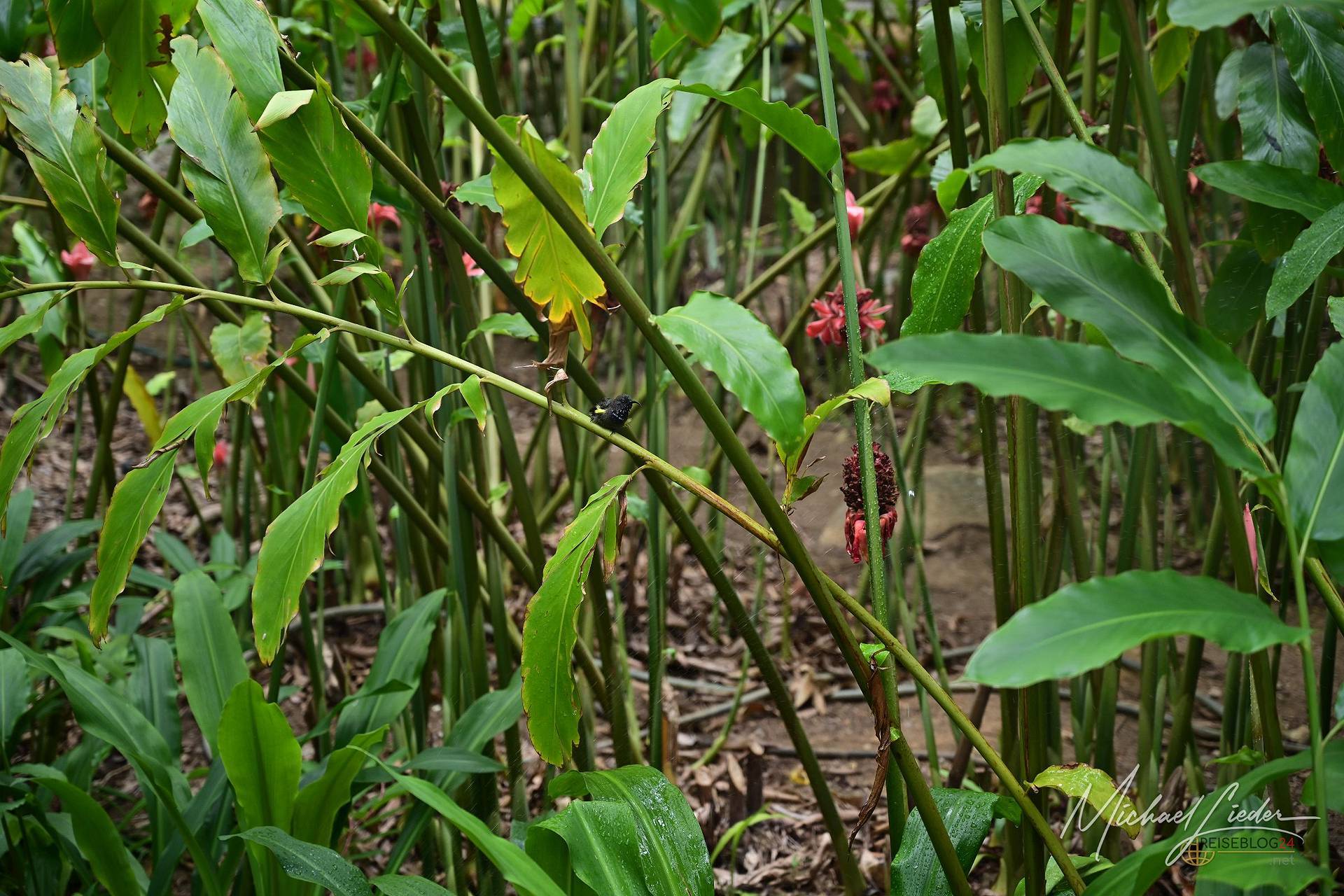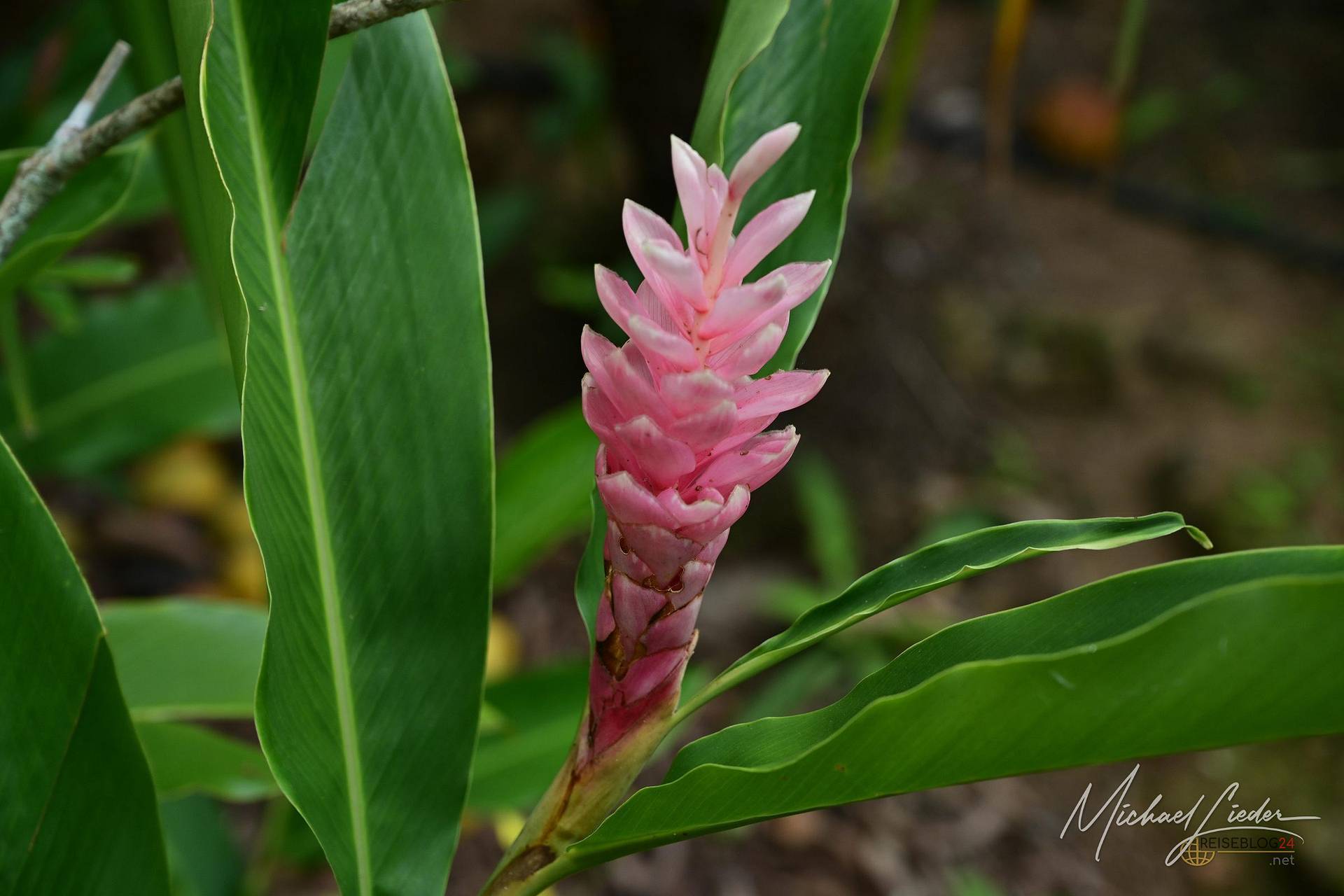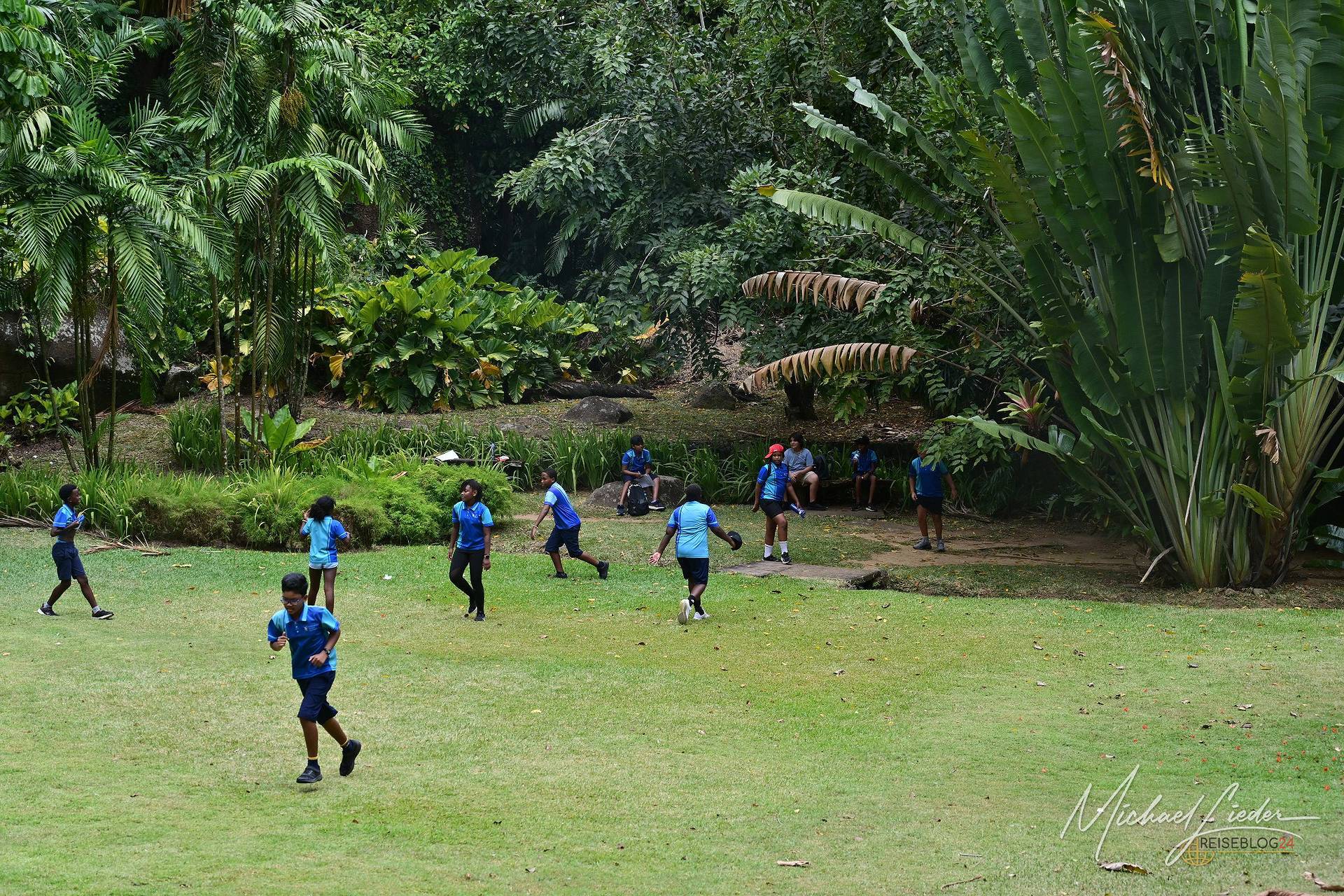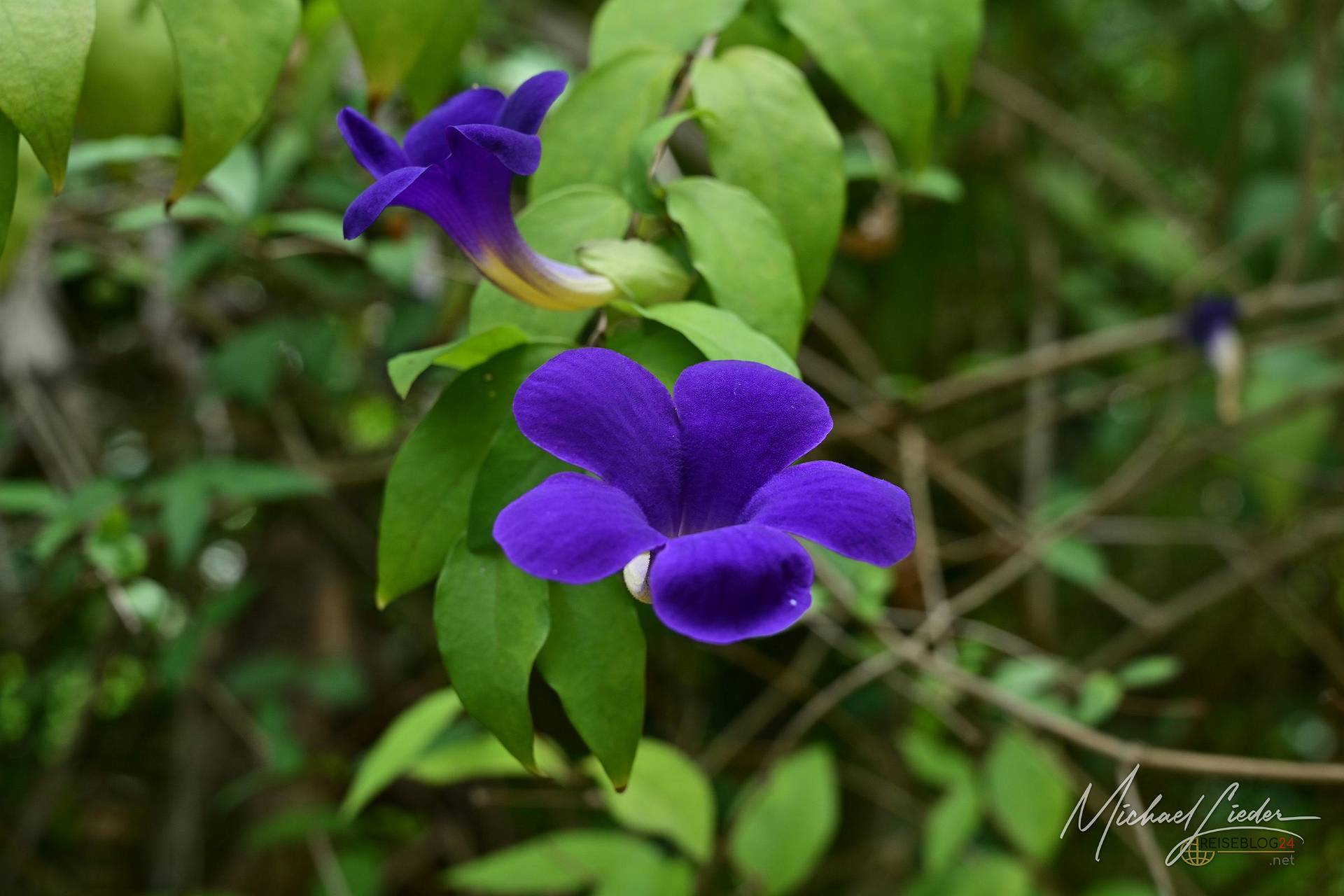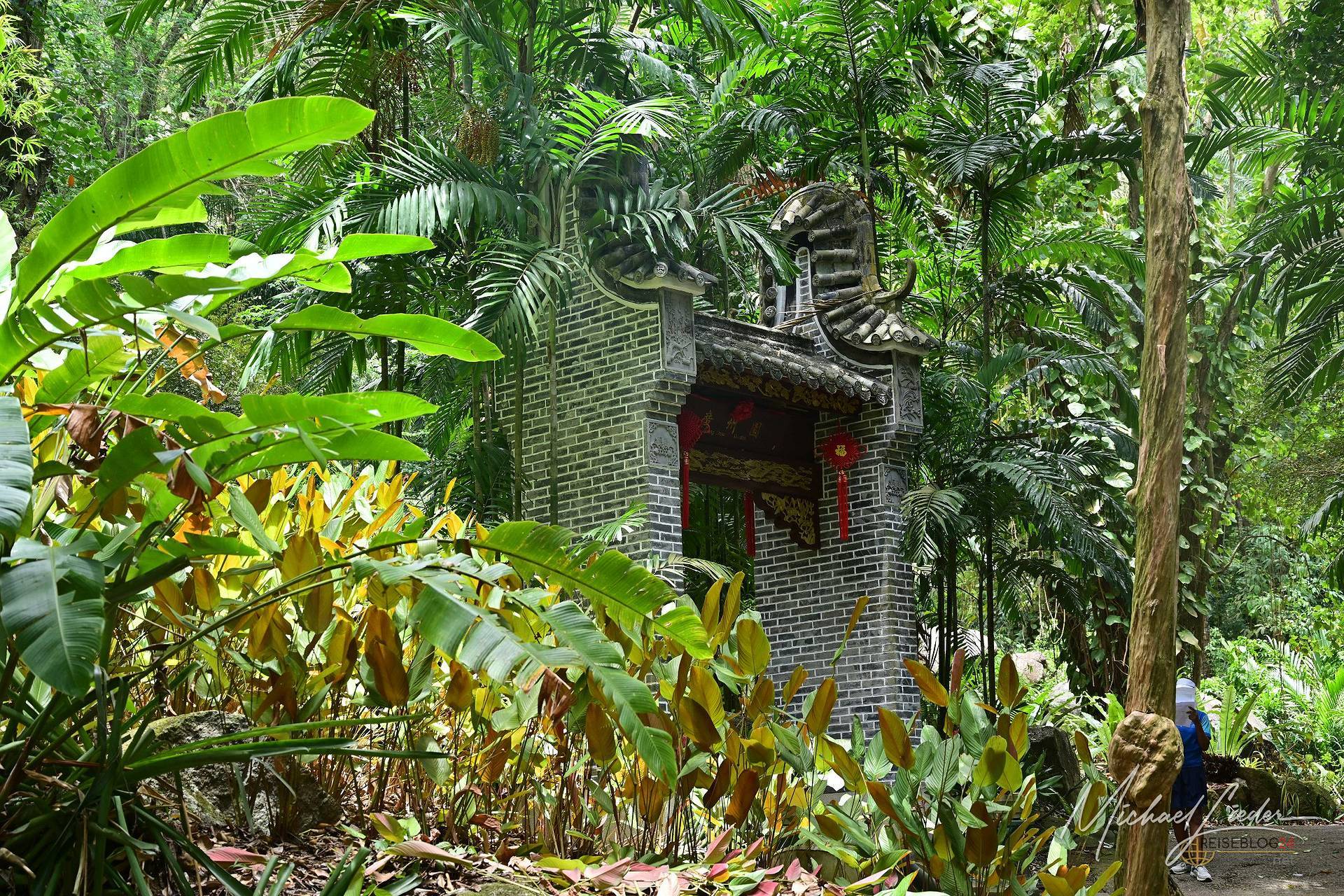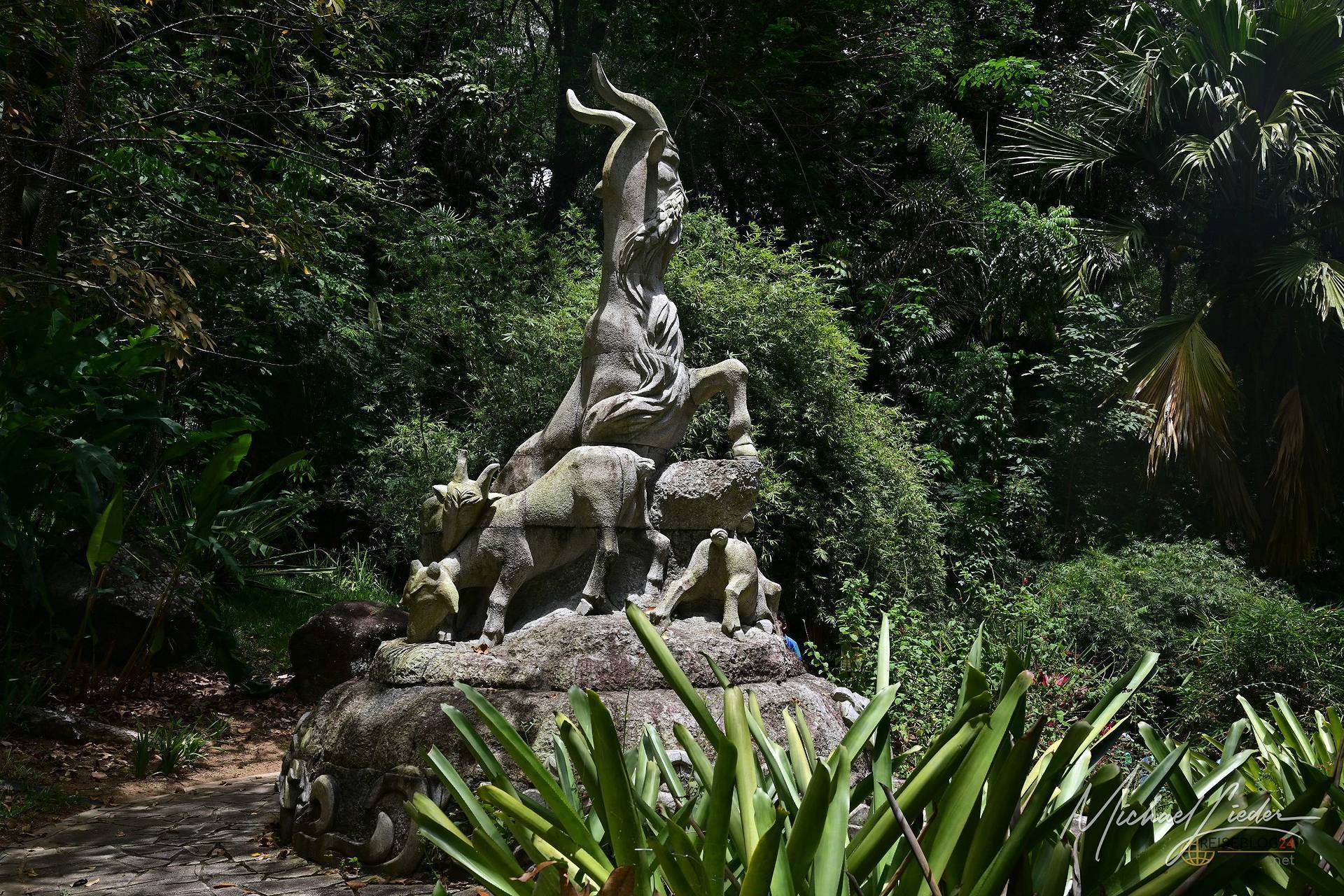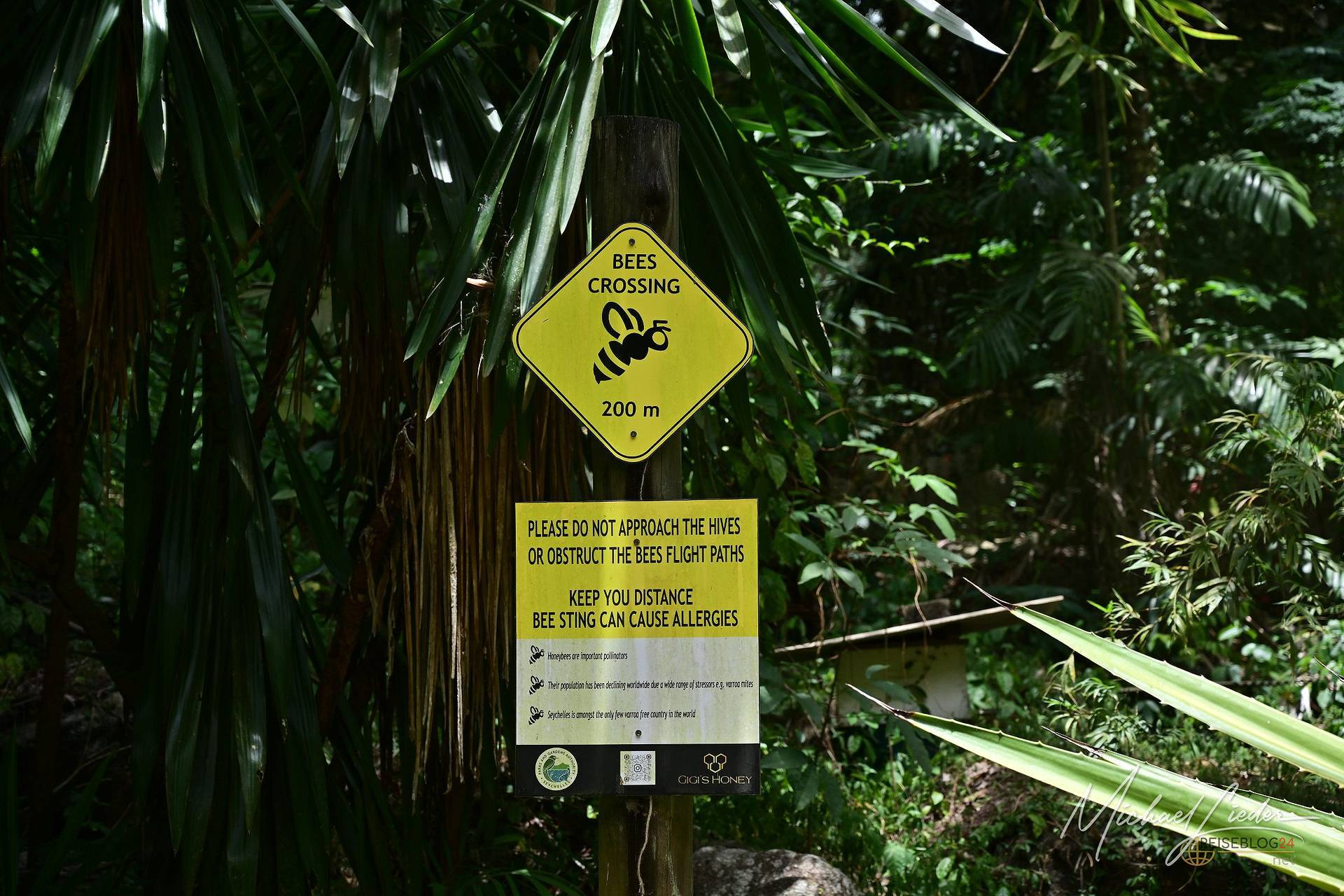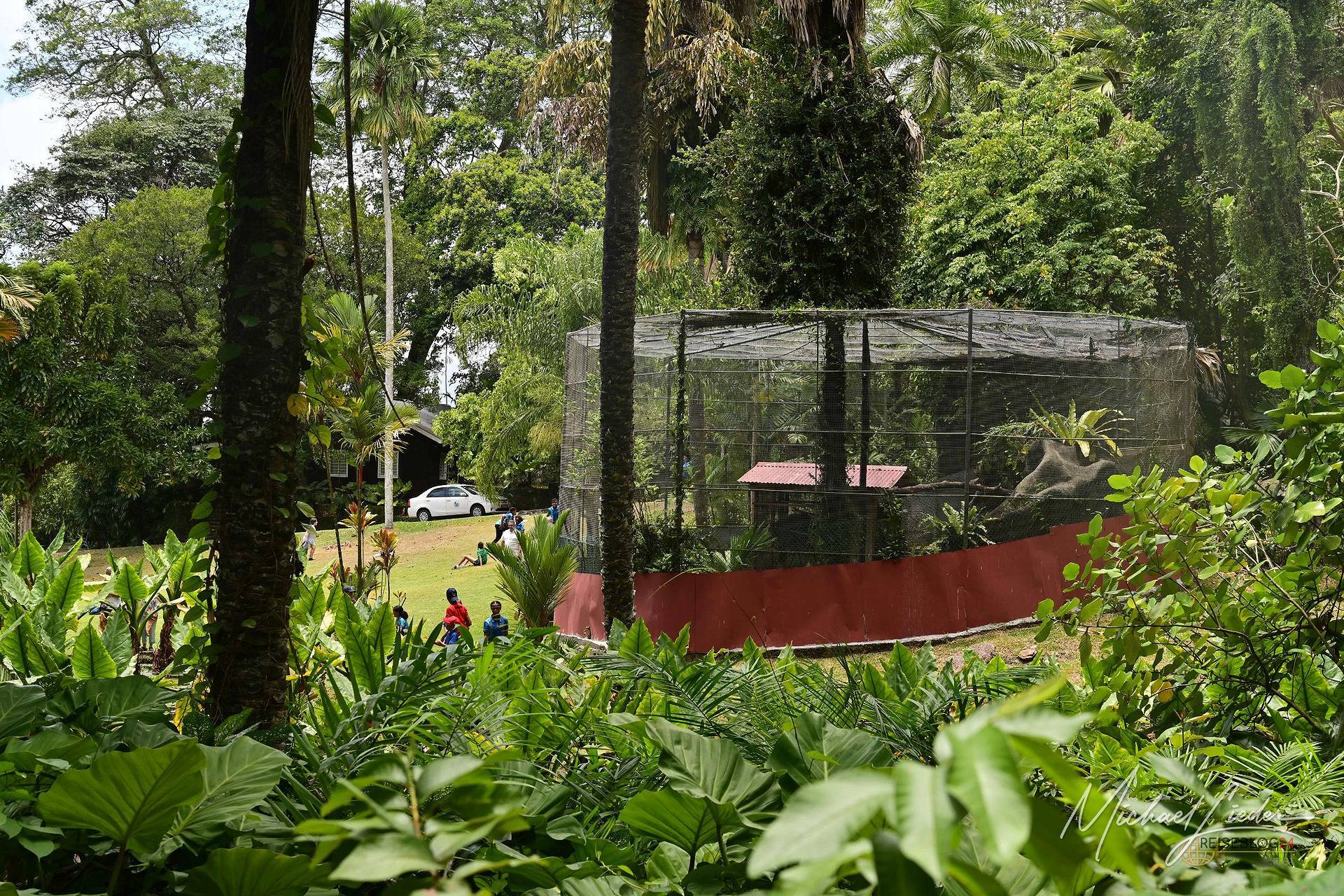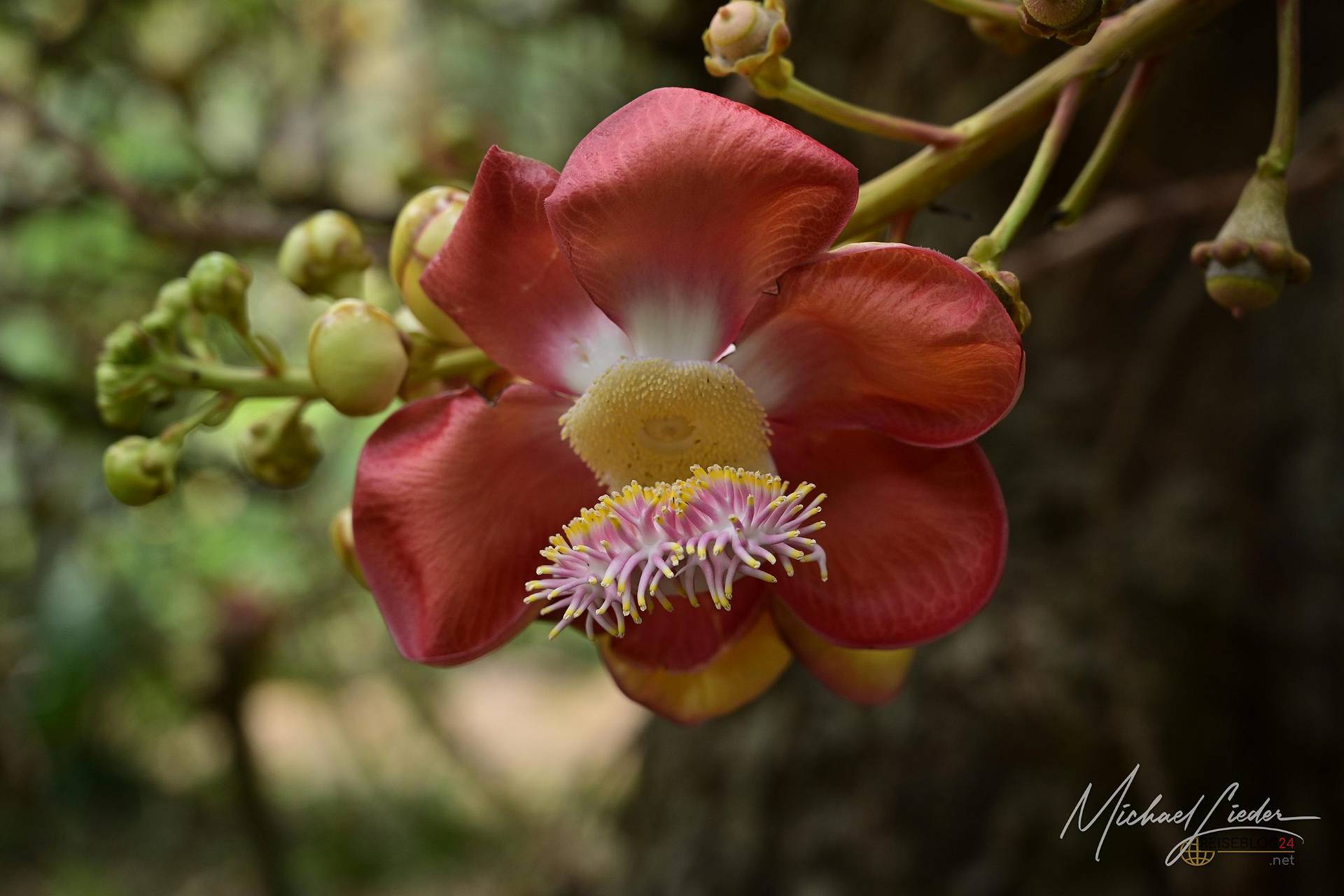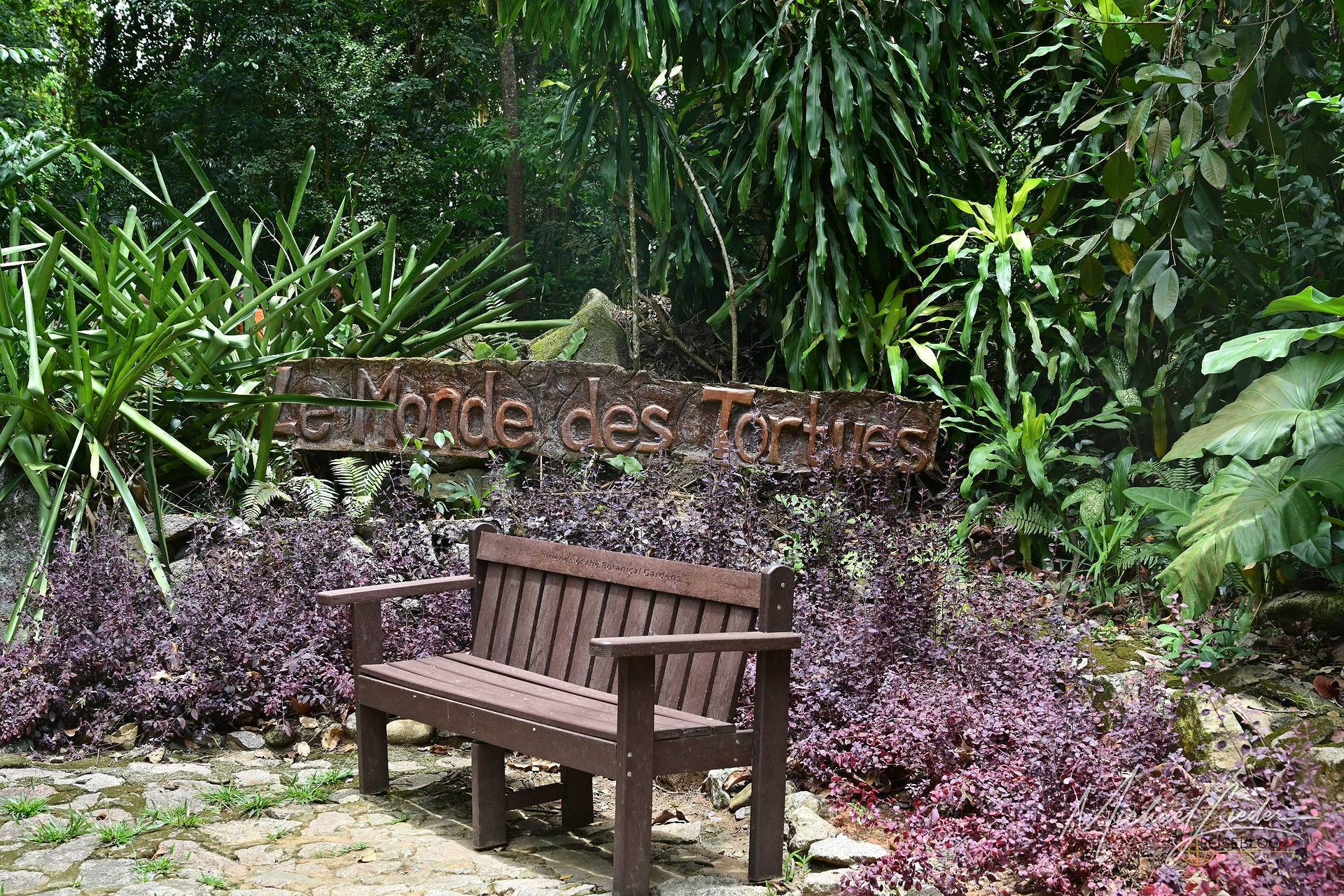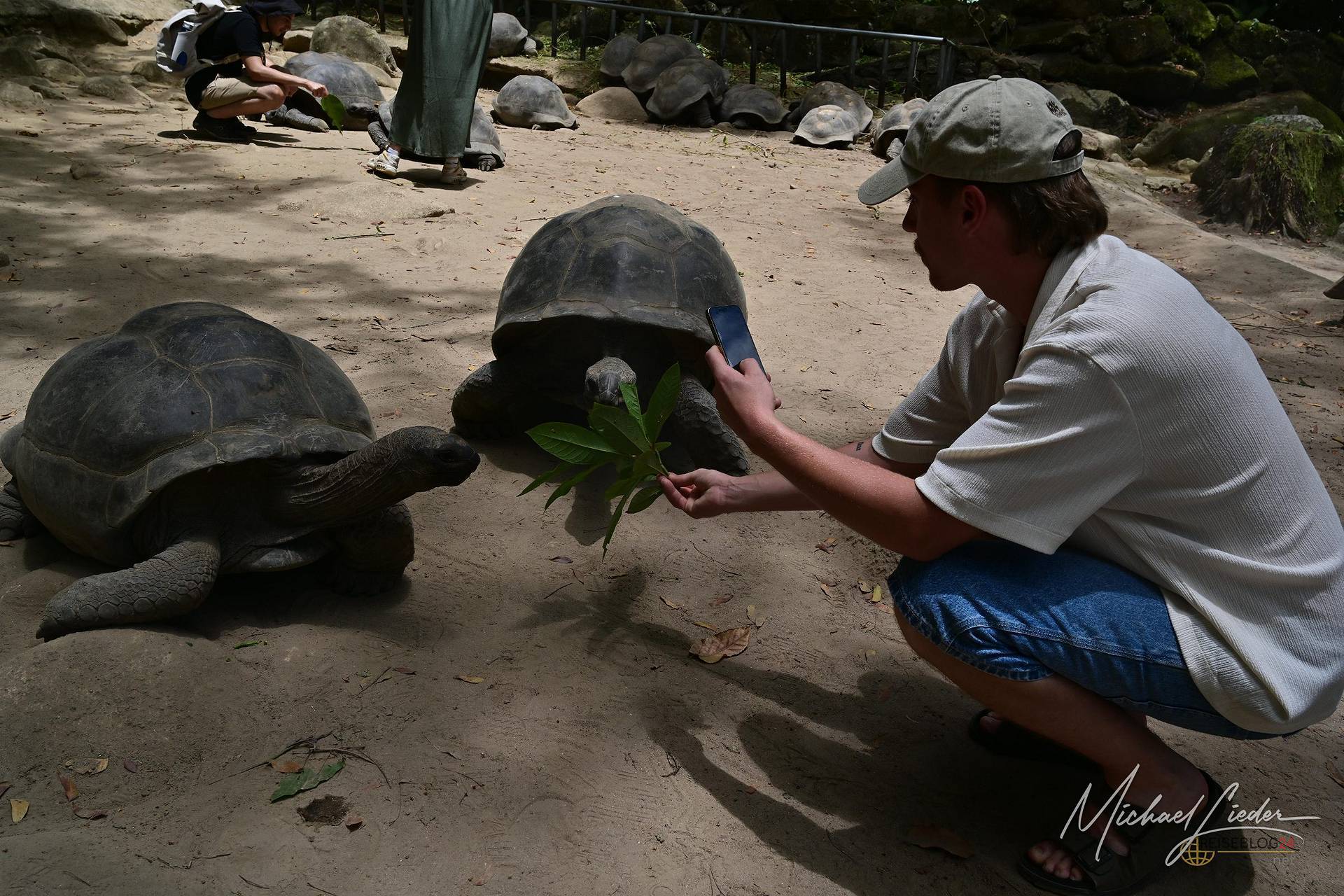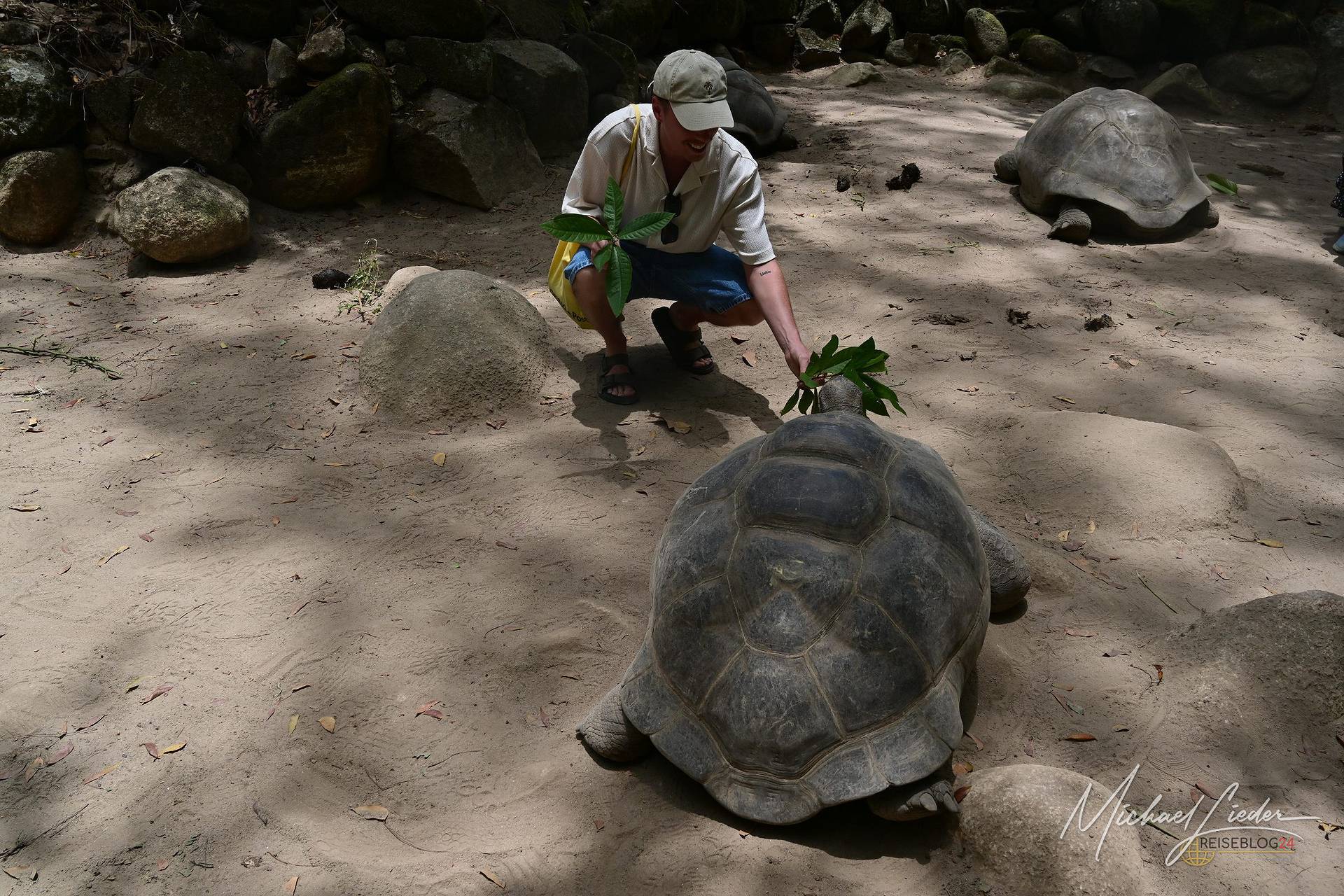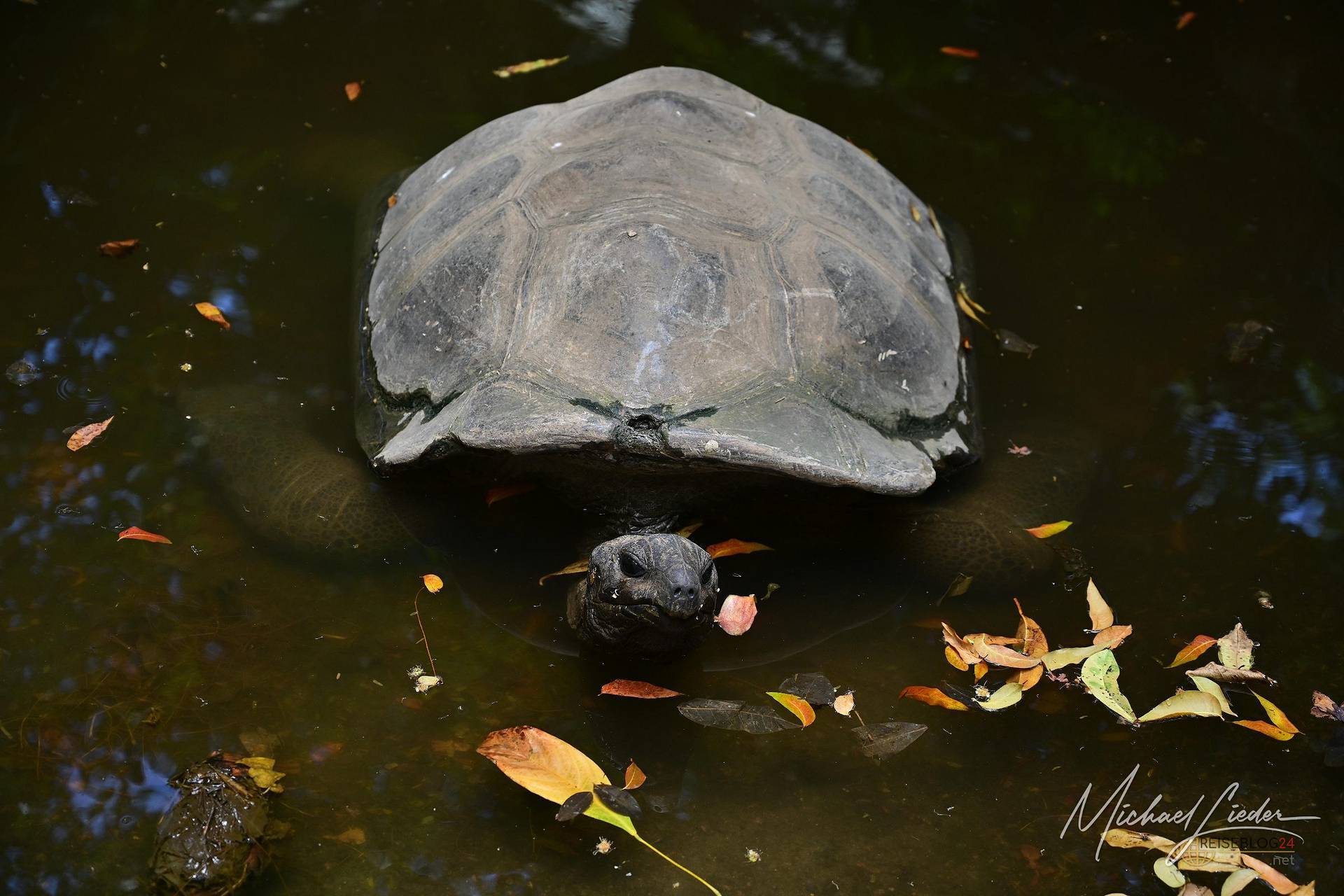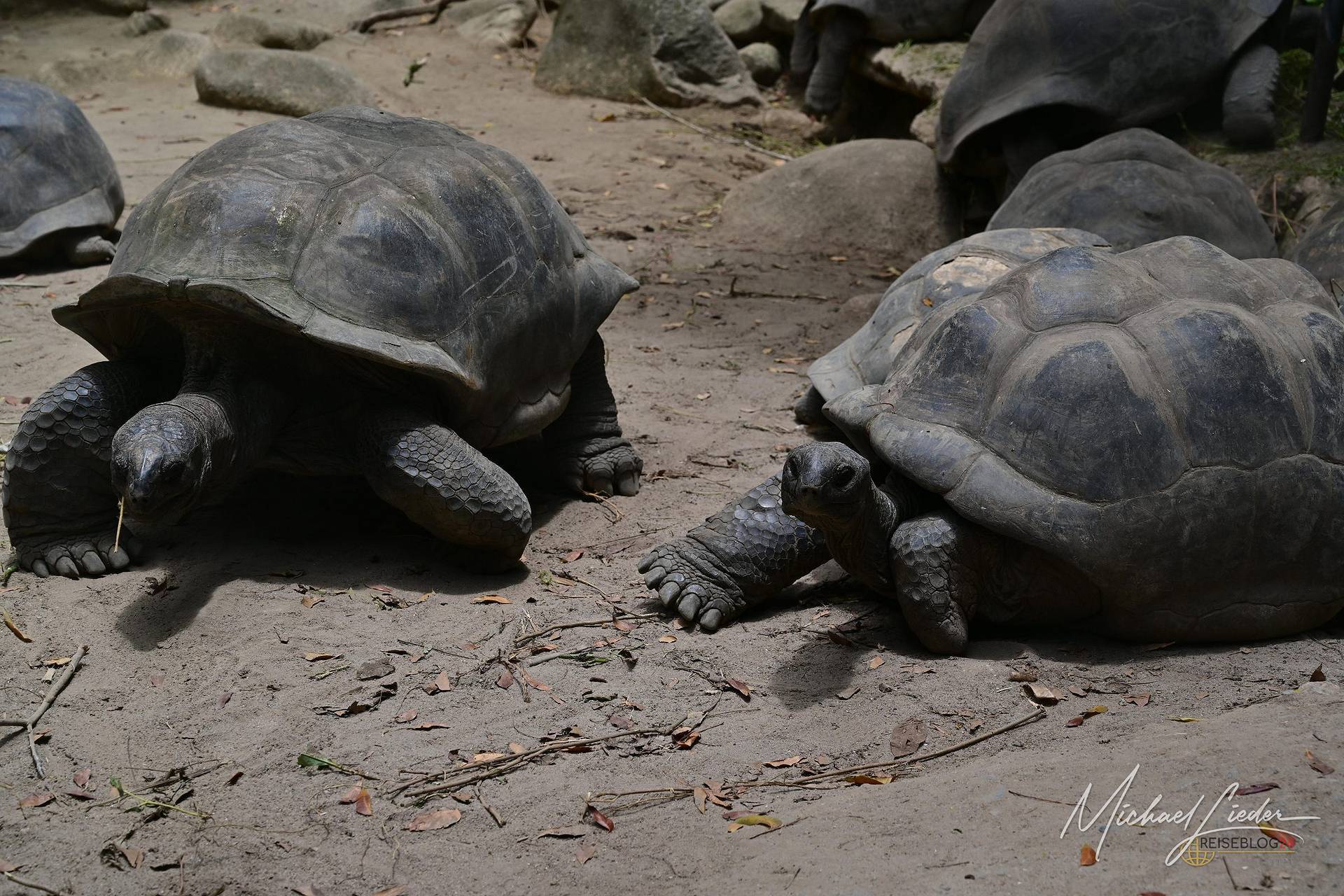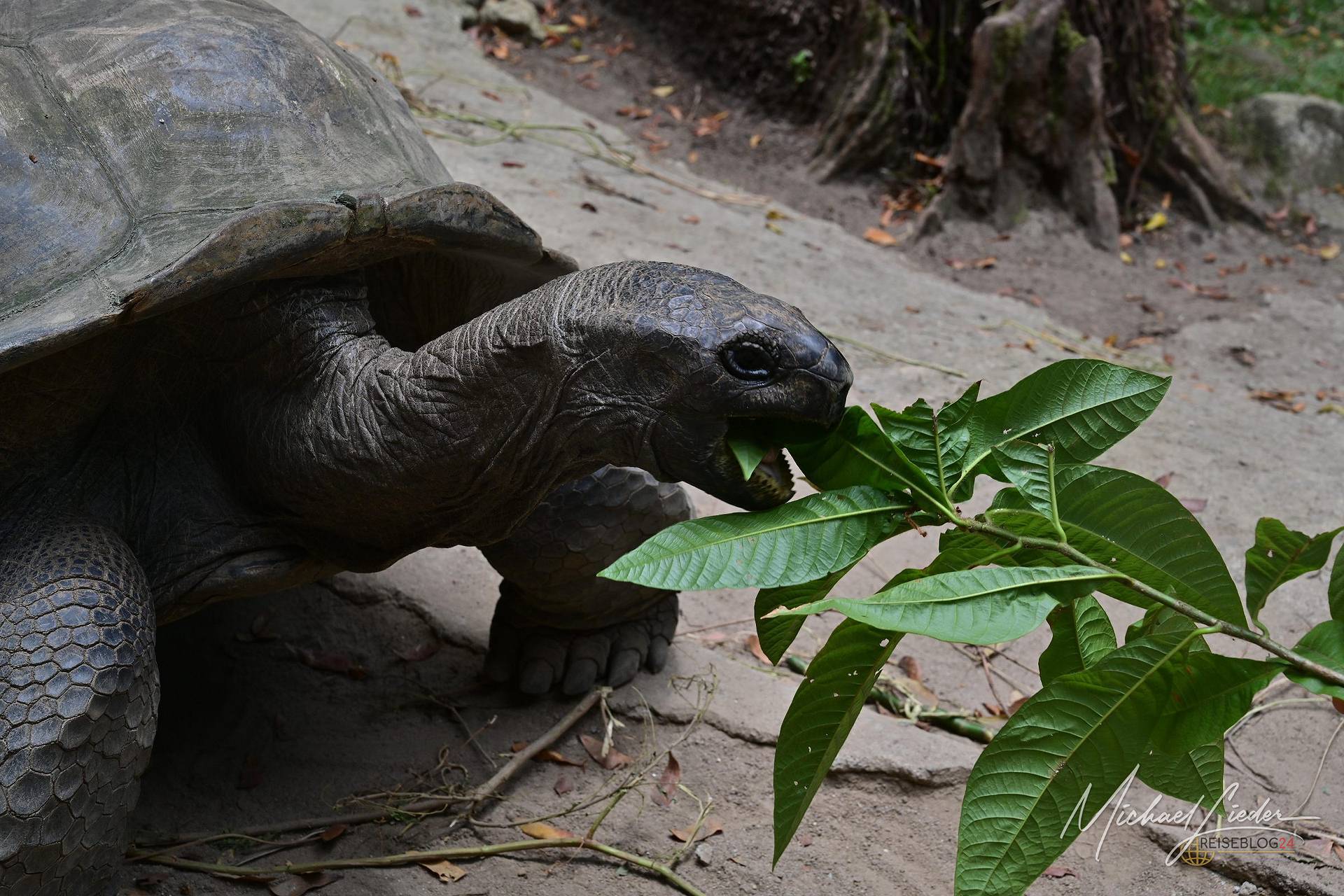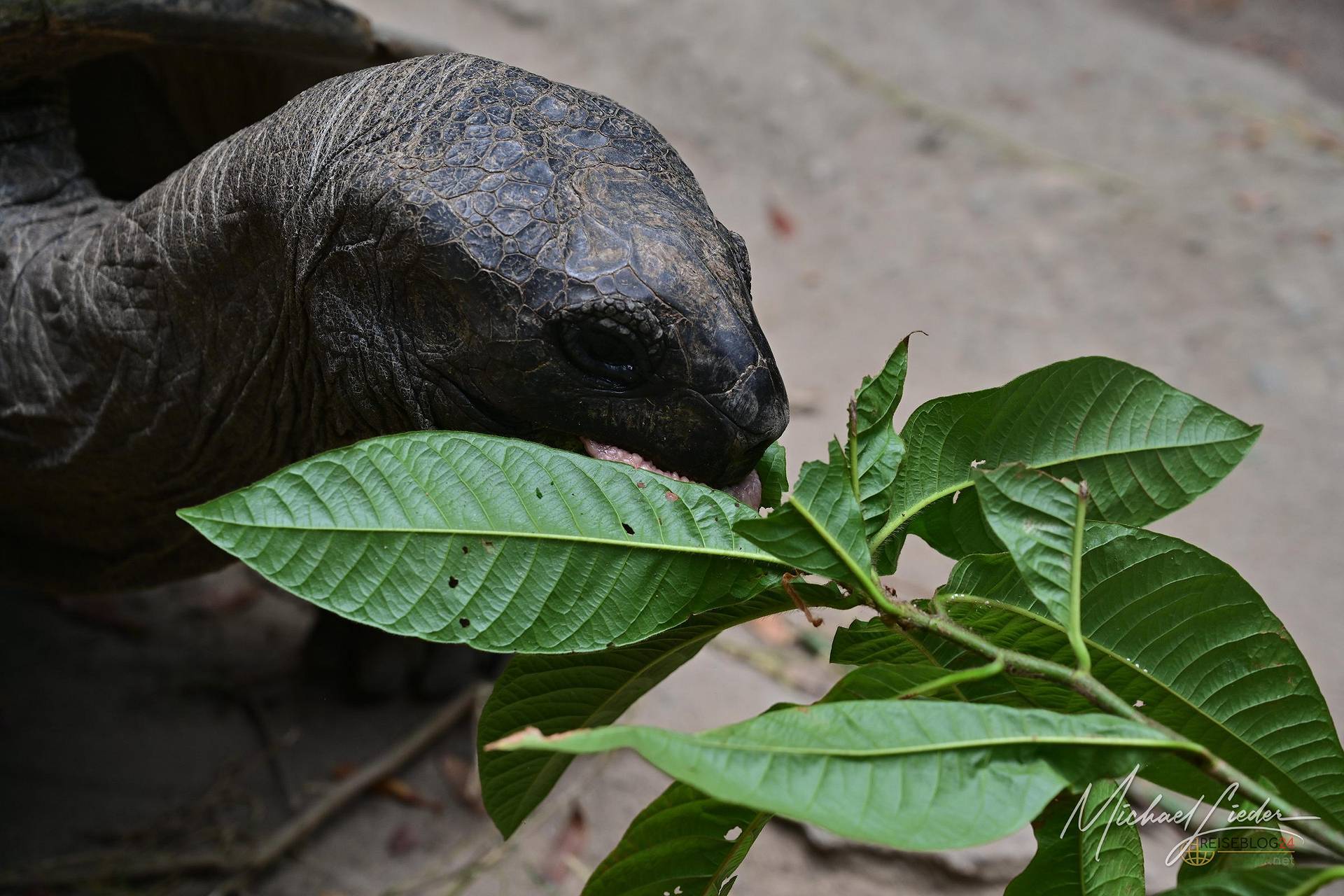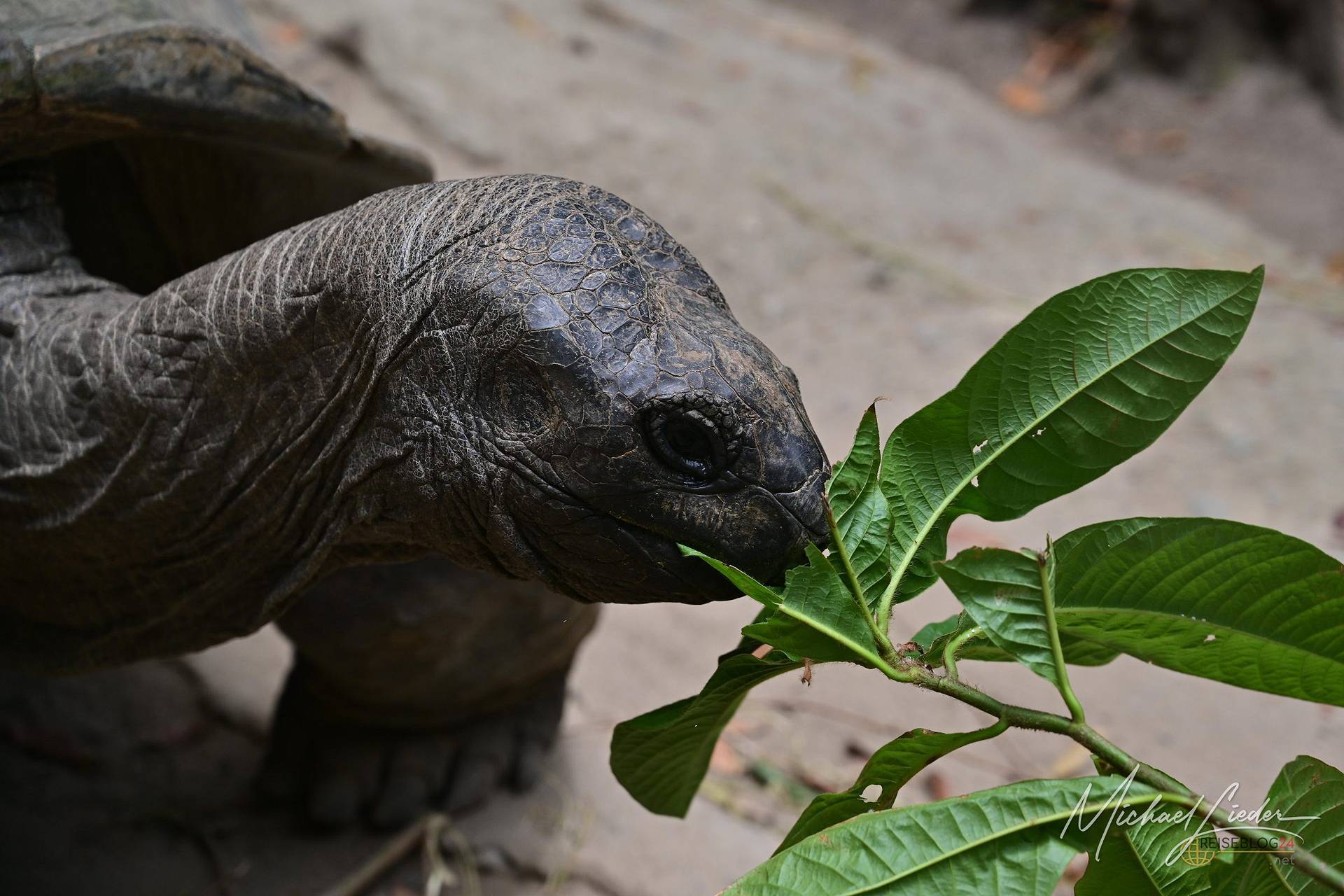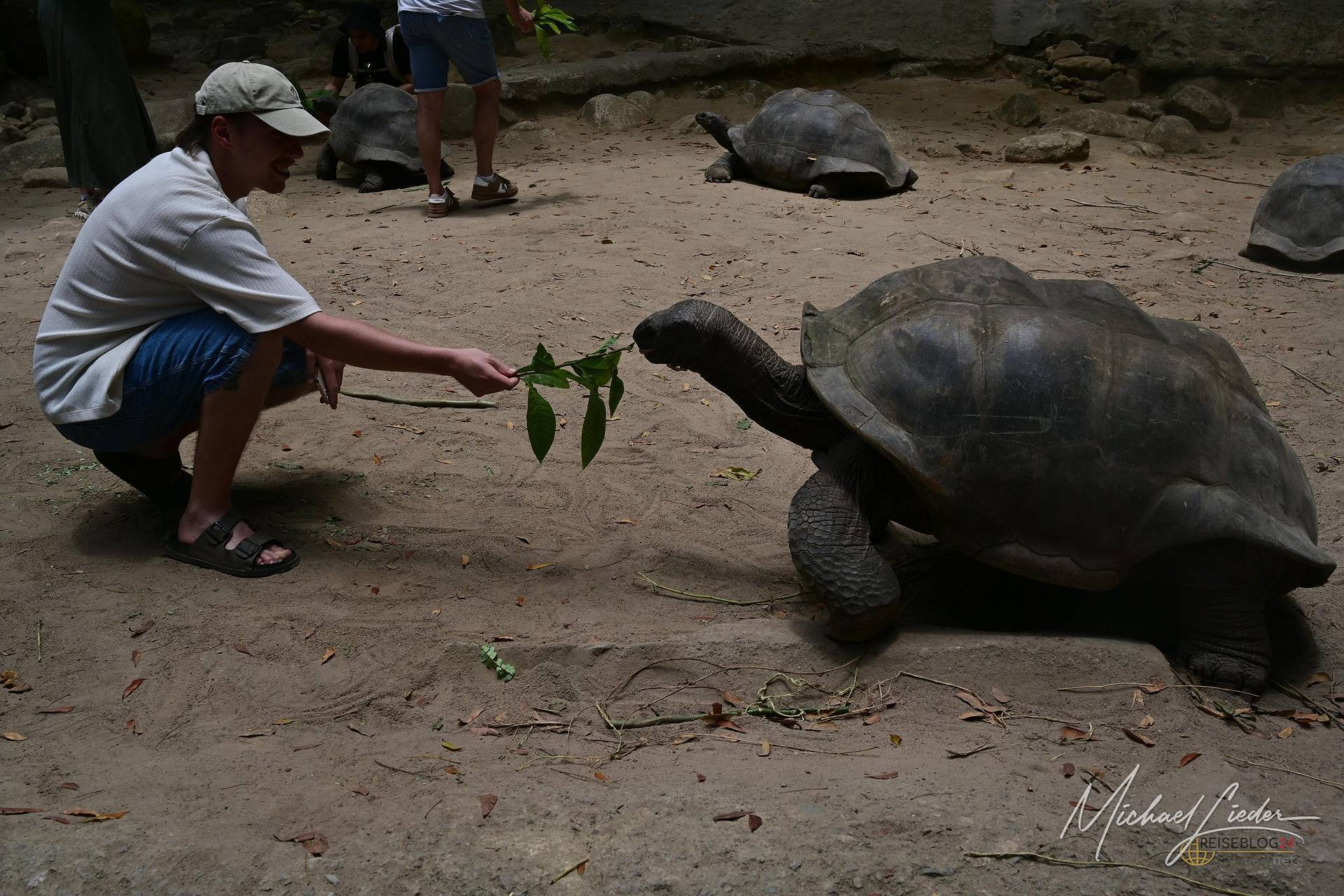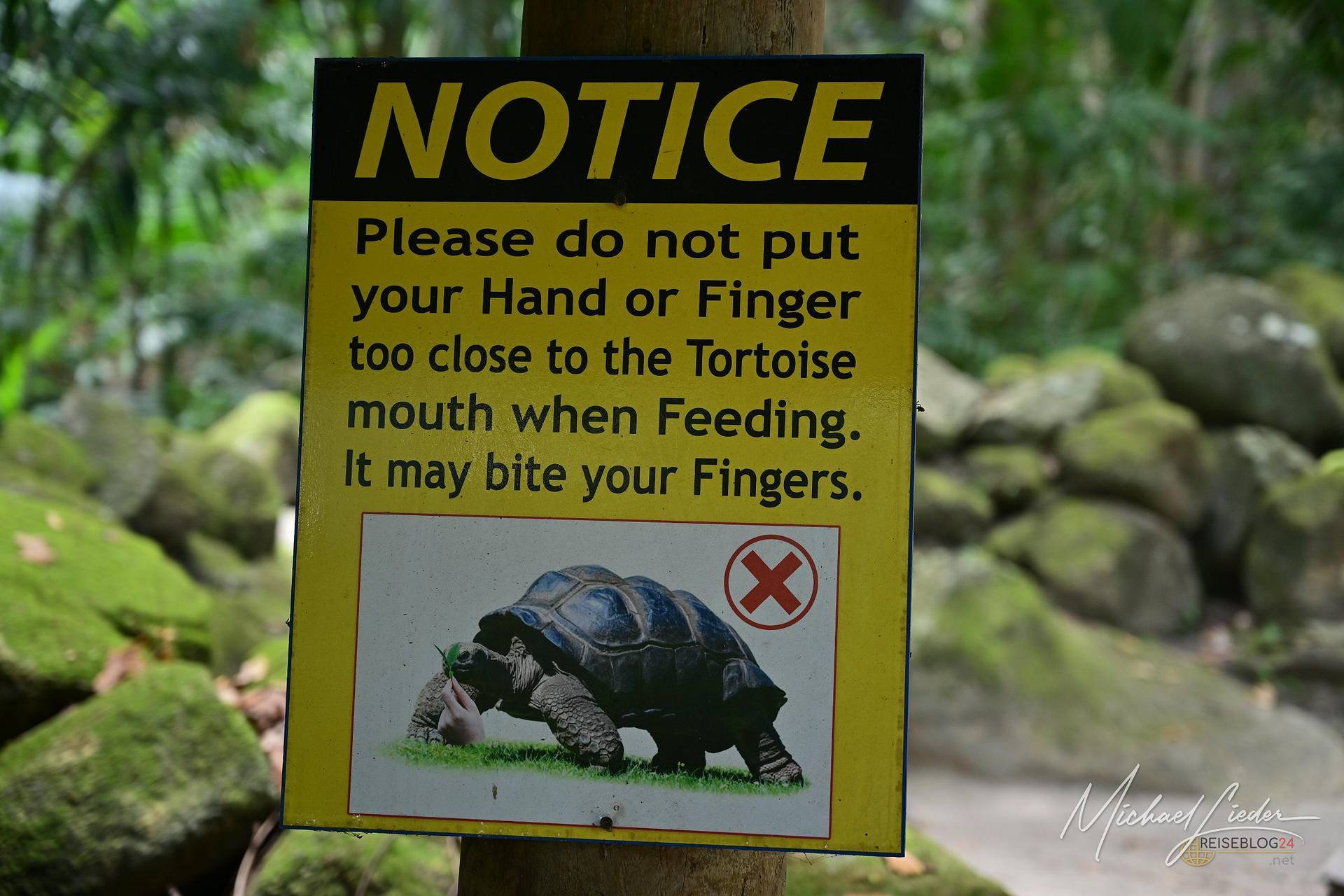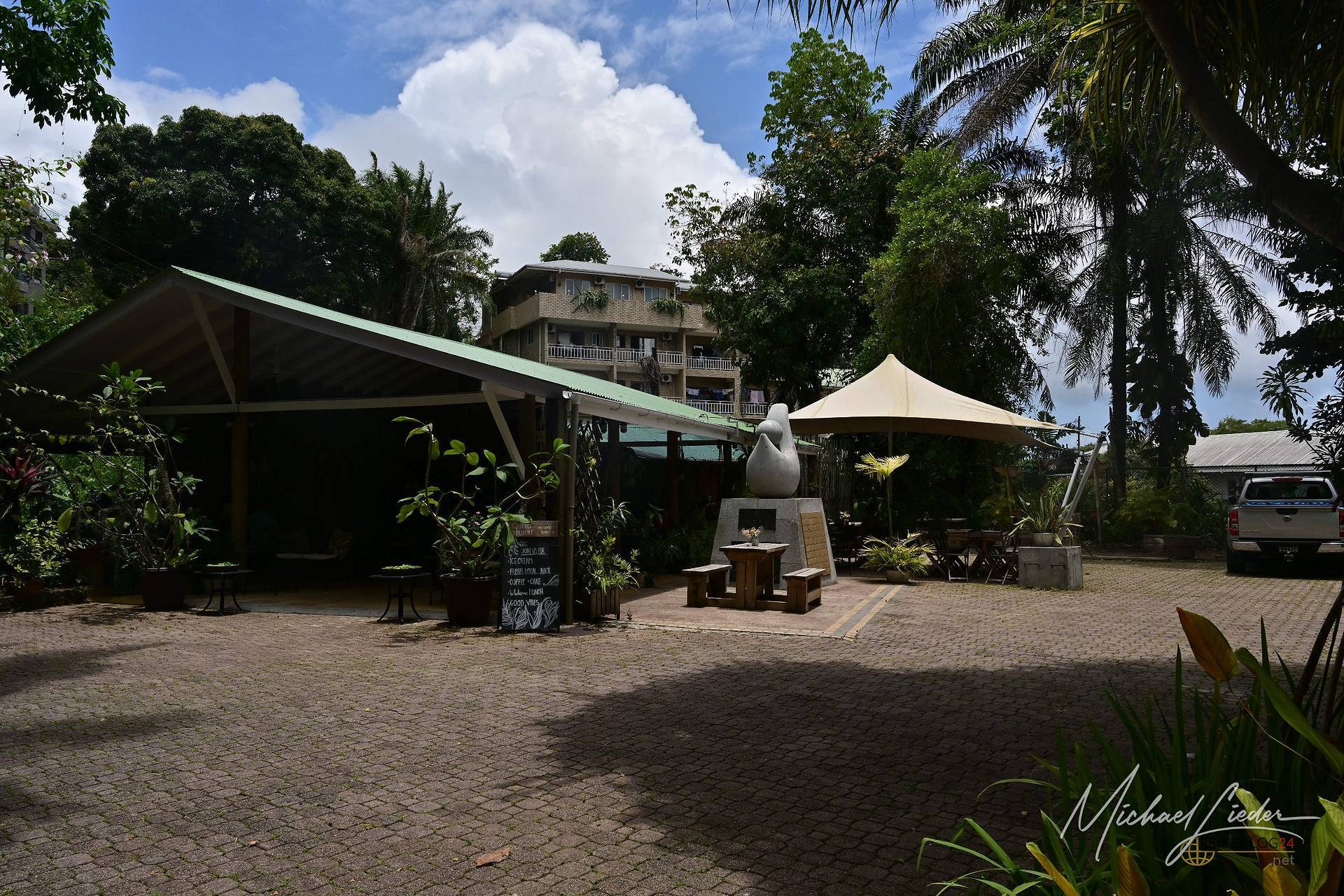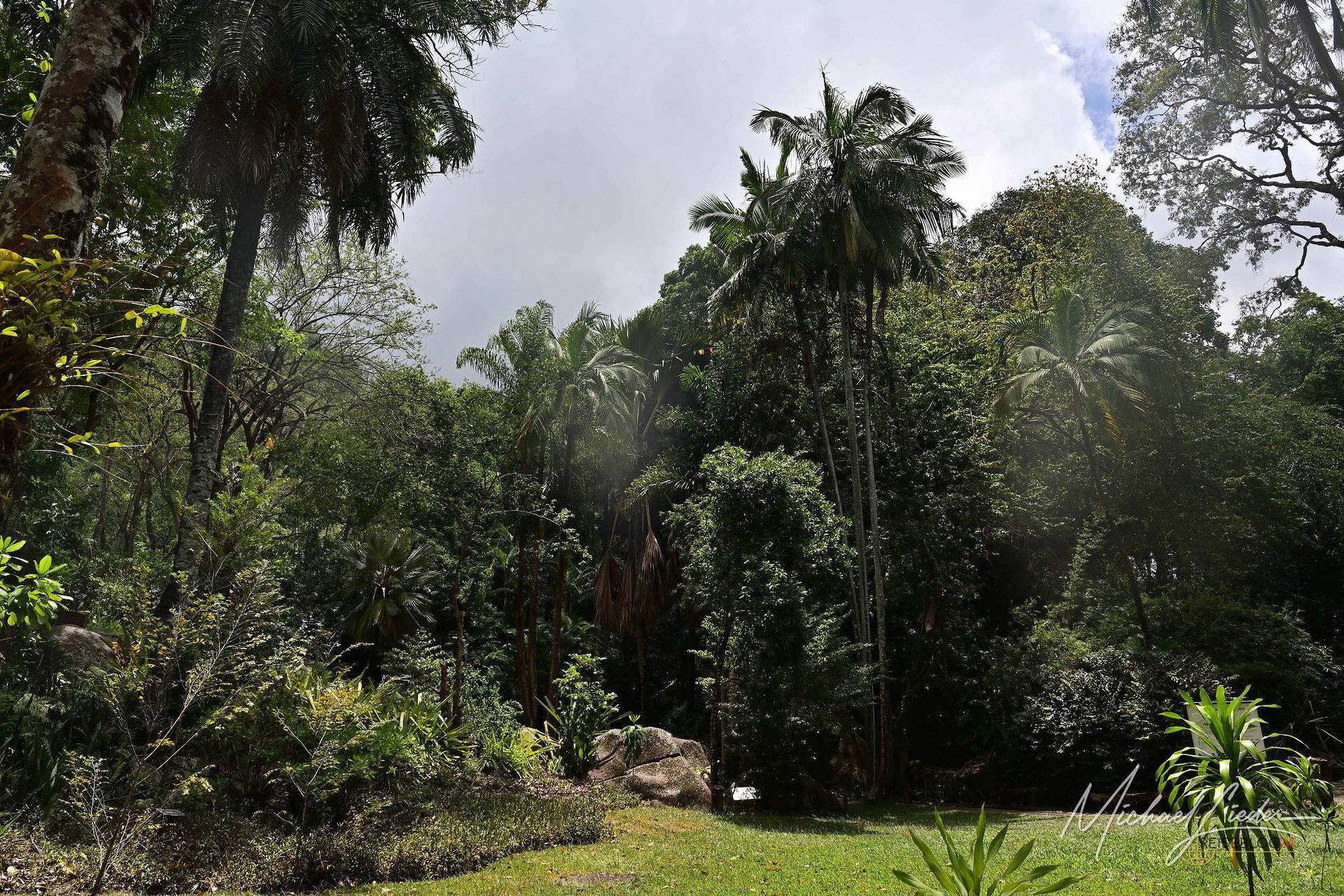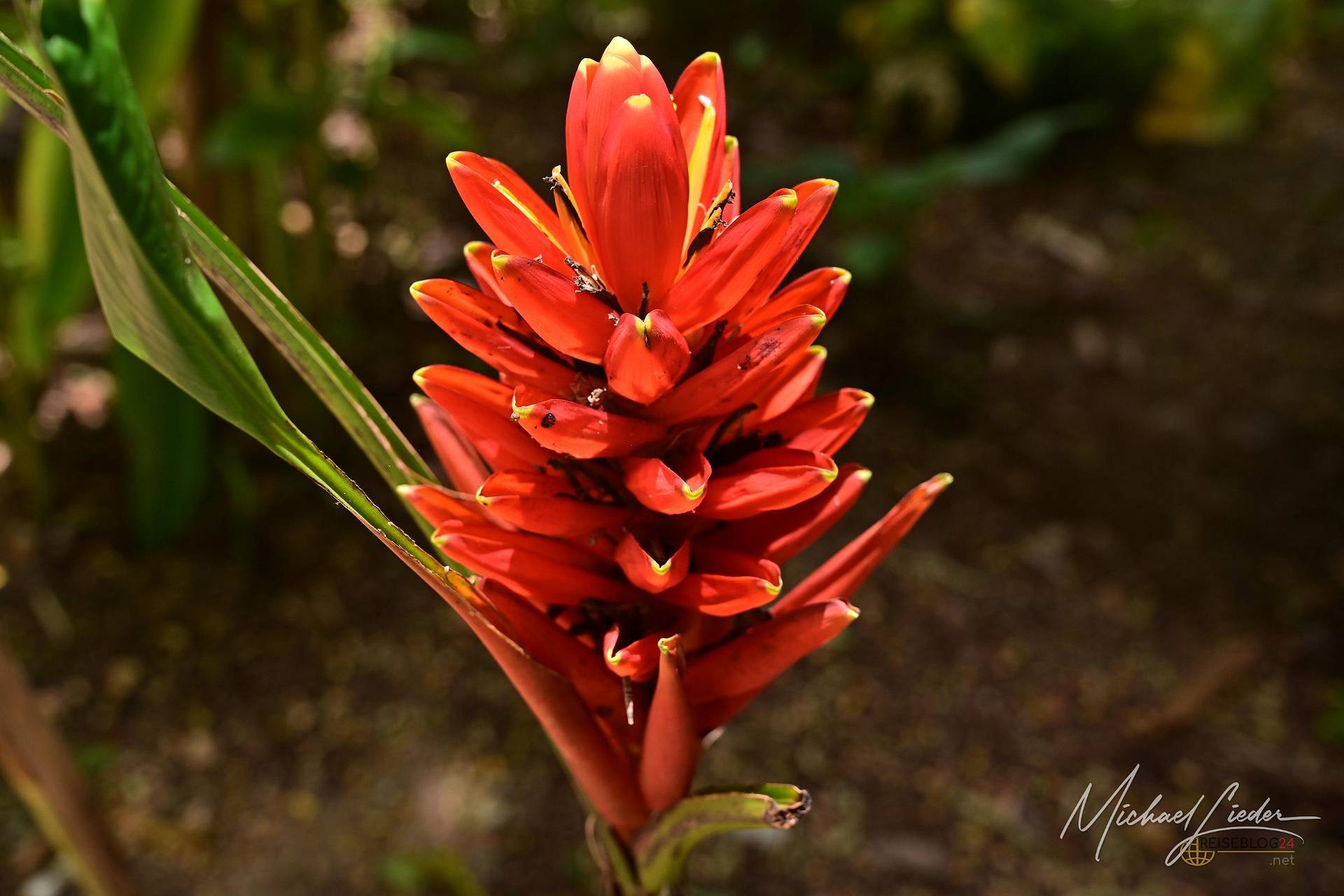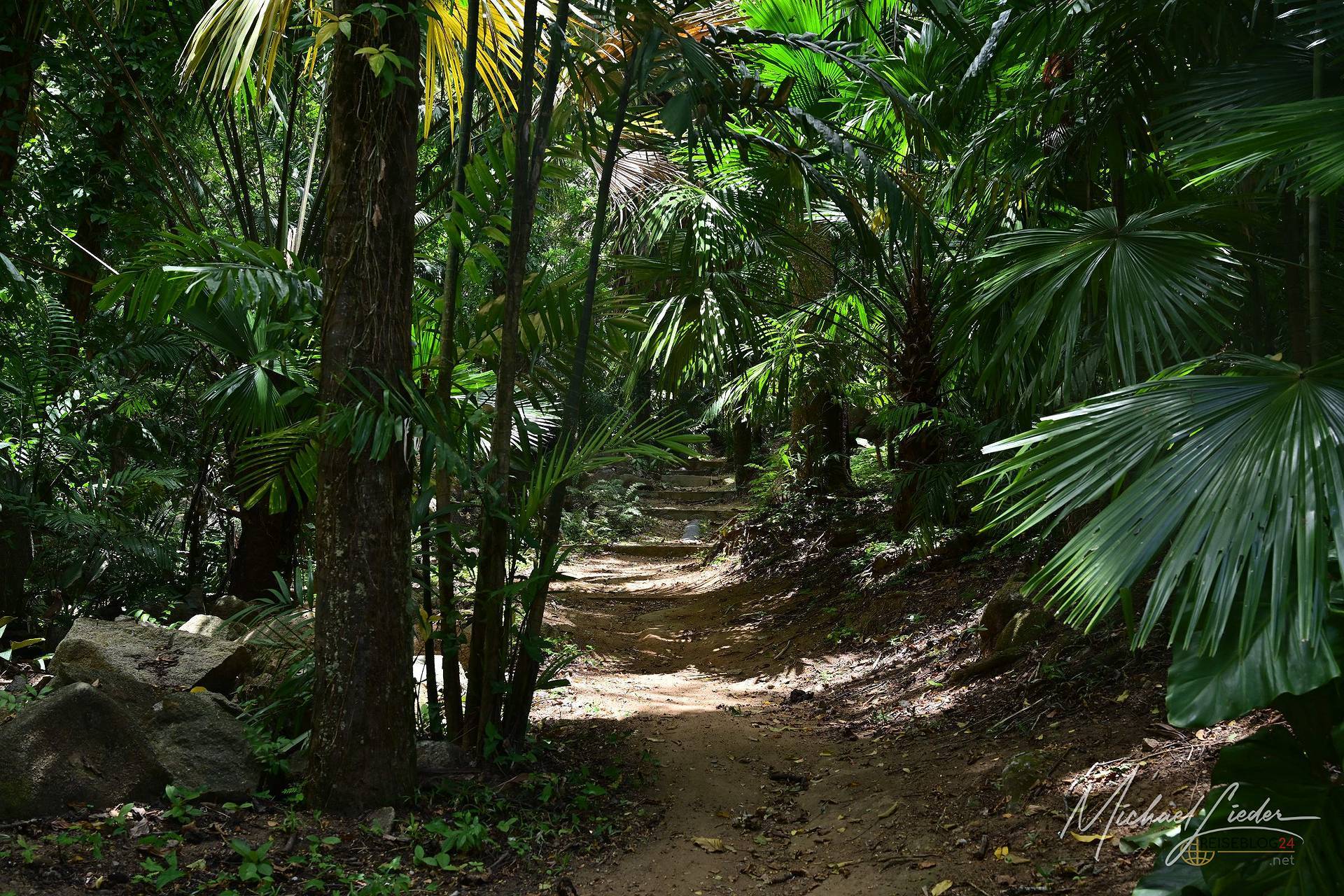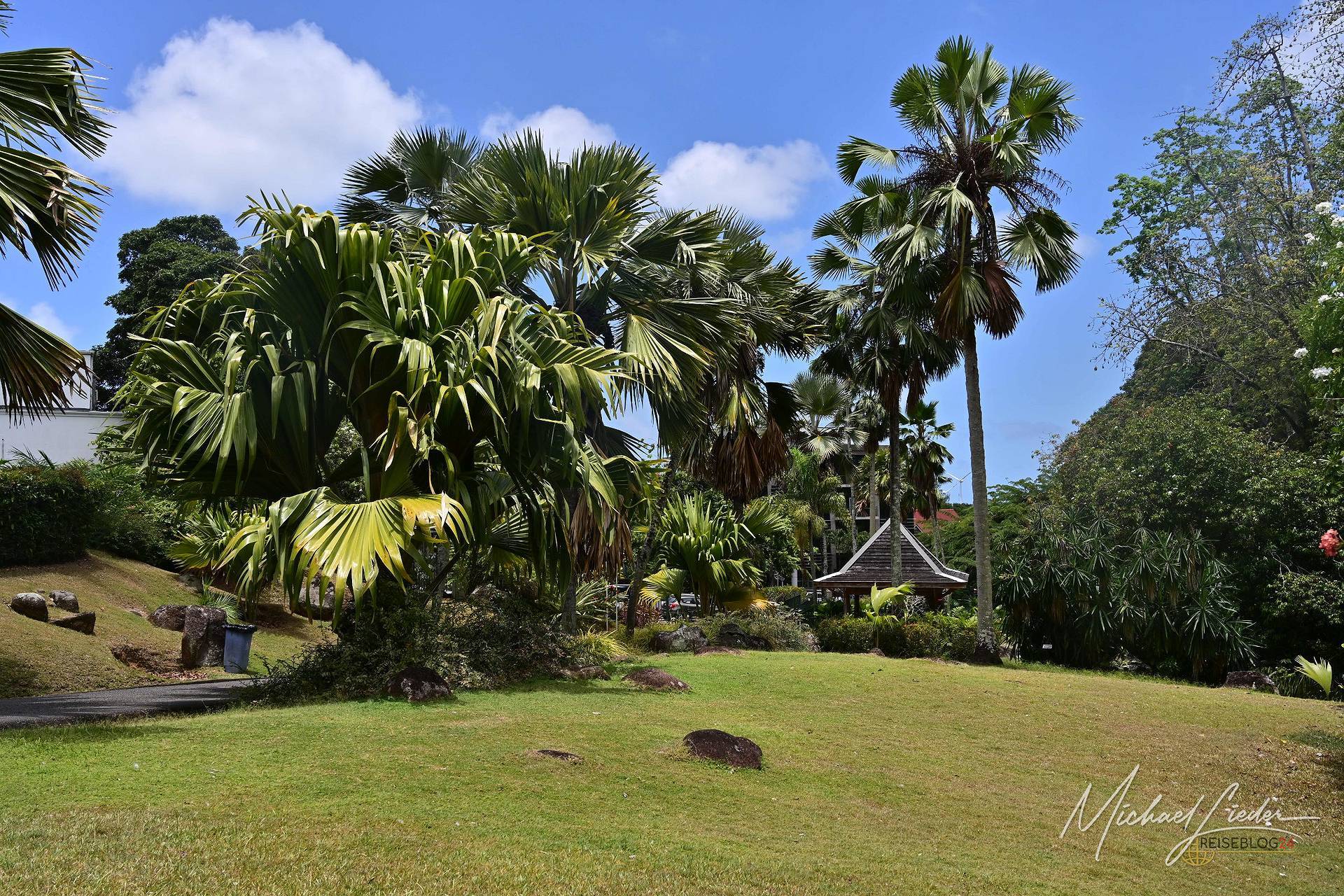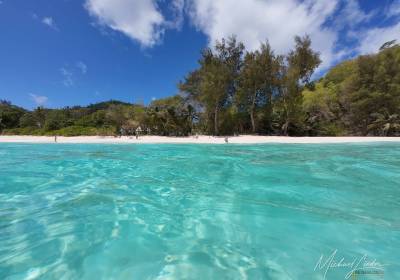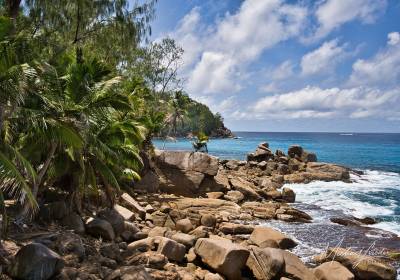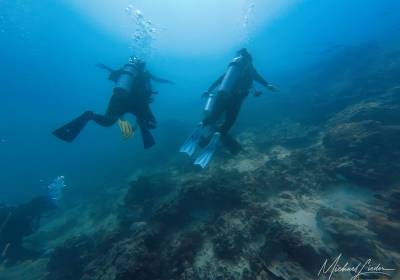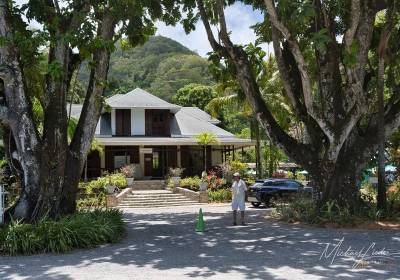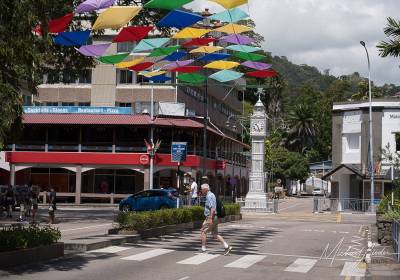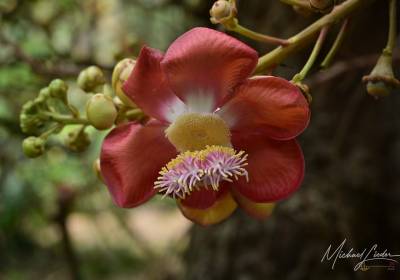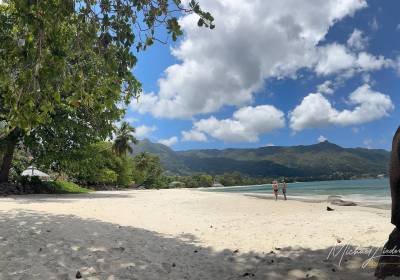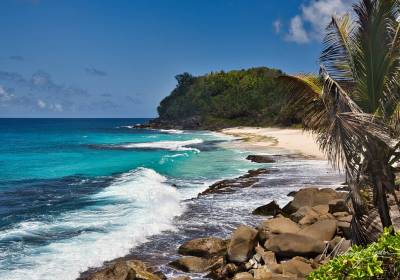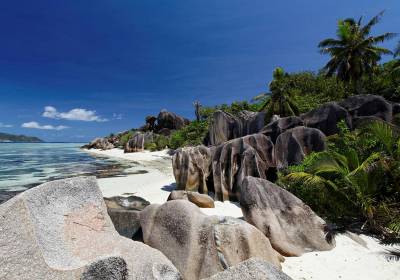Victoria – Bel Air Cemetery and Botanical Garden
When you are in the Seychelles and spend a few days in the capital Victoria, you inevitably ask yourself what else there is to experience here. To be completely honest, Victoria does not offer a great tourist infrastructure; the city is more of a skilful legacy between the French and English past. This inevitably includes the Bell Air Cemetery and the botanical garden, both of which are, let's say, highlights that are well worth seeing.
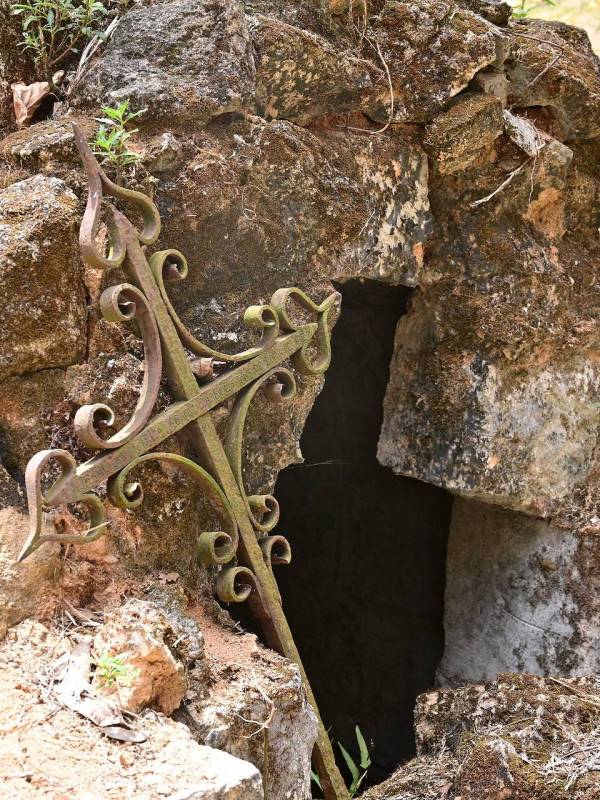
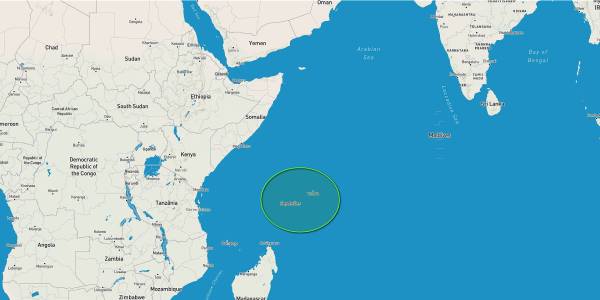
Between colonial heritage and tropical serenity
Honestly: Victoria isn’t the kind of place that shows up in glossy travel brochures full of superlatives.
There are no sky bars with infinity pools, no selfie mobs posing in front of mirrored skyscrapers — and that’s exactly its charm. The city feels like a living history book, where French elegance, British order, and Creole ease have conspired to write a wonderfully odd, yet endearing chapter.
If you take a closer look, you’ll find a quiet poetry between the market stalls, colonial houses, and honking taxis. The Bel Air Cemetery, slightly weathered, whispers stories from another era — while the Botanical Garden, with its giant tortoises and royal palms, gifts a slice of tropical serenity.
Victoria may not be the place for grand adventures, but it’s definitely one for the second glance — for travelers who understand that the magic often hides in the unremarkable. And sometimes, that’s the real discovery.
The Bel Air Cemetery
Where legends found peace but not rest
On the outskirts of Victoria, where the city slowly melts into the green hills, a narrow road winds upward — first through tropical thickets, then higher and higher, until the view over the bay becomes almost kitschily beautiful. Right there, on the left, stands a modest sign:
Bel Air Cemetery.
In the guidebook it’s listed as a “haunted graveyard” — and, well, that was all it took to spark my curiosity.
So we stopped. Not a soul in sight, just the chirping of cicadas and a gate that creaked softly in the breeze, as if whispering: You sure you want to go in?
The Bel Air Cemetery is no ordinary place. It was the first official cemetery of the Seychelles, mentioned as far back as the 18th century. Many of the graves date from a time when pirates, colonial lords, and missionaries were busy writing the islands’ history — and you can feel it here. Between the tilted tombstones lie stories that are half history, half legend.
Take Jean-François Hodoul, for instance — a French pirate who, after his sea adventures, found his final rest here. Probably with more style than some tourists shuffling through Victoria in flip-flops. And then there’s the tale of the Giant of Bel Air — a 14-year-old boy said to have been over three meters tall. His neighbors were apparently so terrified of him that they poisoned him. Today he rests here, quietly and peacefully, beneath tropical leaves — and as you read his story, you can’t help but hope he’s finally at peace.
Many headstones are weathered beyond recognition. Some crypts look as if one strong gust could send them tumbling. And yet — or maybe because of that — there’s something profoundly honest in this decay. No polished narrative, no tourist attraction, just the raw, unfiltered essence of the Seychelles: beauty with a touch of patina.
Over the centuries, grave robbers have tried their luck here, digging for gold, silver, and precious stones. What they found is uncertain — but probably worth far less than the silence that surrounds you now. Those who step through the crooked gate and follow the barely visible path upward are rewarded with a view that feels almost comforting: the city stretches below, the air smells of the sea, and the wind rustles through the leaves as if humming the old stories onward.
Creepy? Maybe a little.
But above all — quiet, eccentric, and beautifully melancholic. The kind of place that time forgot, yet somehow keeps on breathing.
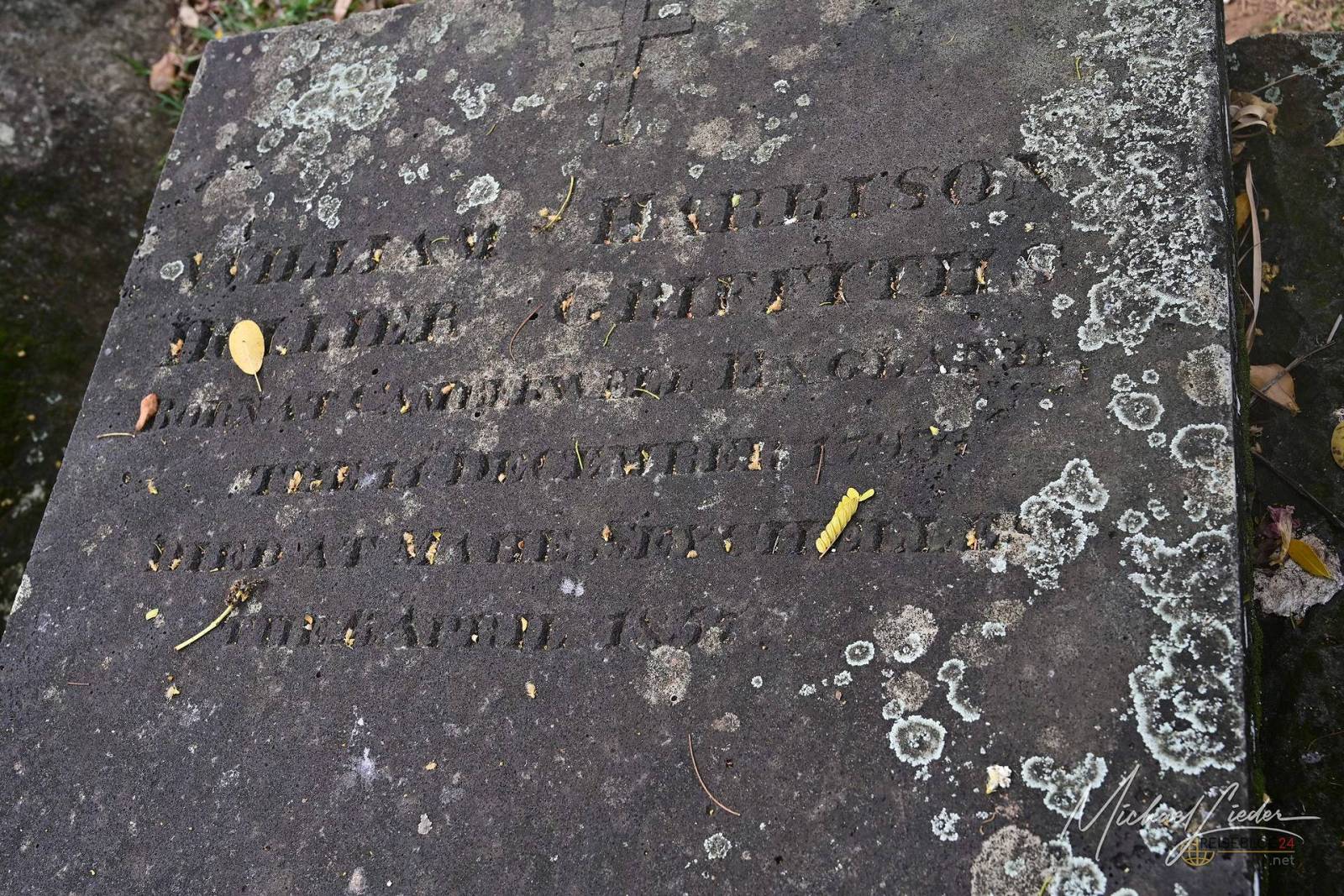
“Native of Shrewsbury, England”
Among the weathered stones, I finally came across a headstone where one could just barely make out the inscription: “William Harrison, native of Shrewsbury, England – died at Mahé, April 18…”
The rest vanishes into moss, lichen, and forgetfulness. Inscriptions like this are quiet reminders of how far people once traveled — not in search of sunshine and selfies, but for work, adventure, or simply a new life. Many found, here at the edge of the world, their final resting place. And as you read these fading words, you can almost feel that each forgotten story carries a tiny fragment of world history within it. The phrase “Native of Shrewsbury, England” is typical of the time — you’ll find it, or something like it, on many colonial-era graves of British origin scattered across the Seychelles.
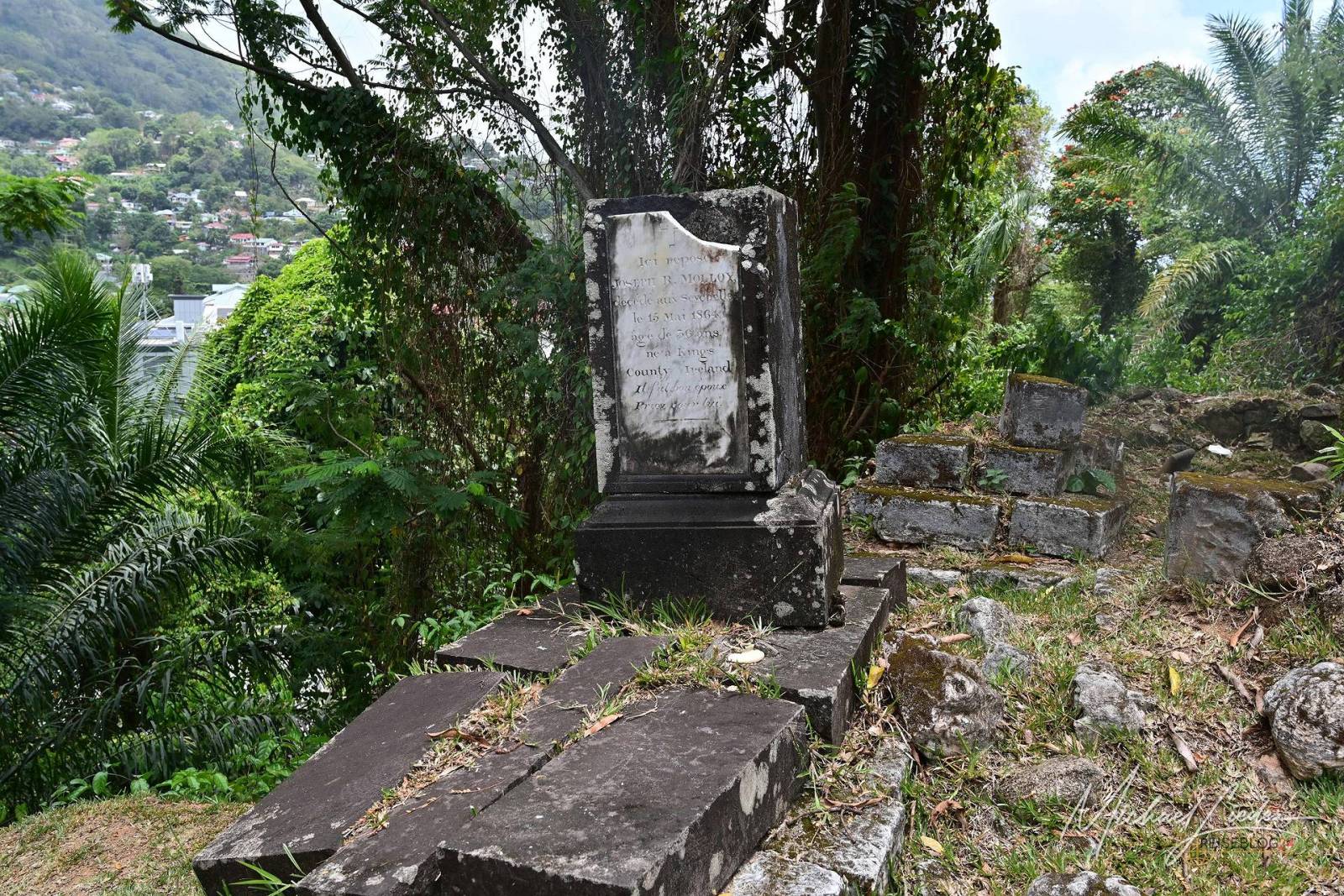
Ernest R. Molloy
A little further up, half-swallowed by the tropical greenery, stands a solitary grave monument — slightly tilted, weather-worn, yet carrying a kind of dignity that even the years haven’t managed to erase. The inscription, in French, tells of
Ernest R. Molloy, who died on May 15, 1863, born in King’s County, Ireland. One can’t help but wonder how far this man had traveled before finding his final rest here — on an island in the middle of the Indian Ocean.
Maybe he was an official, maybe an adventurer, or perhaps just someone who stayed away from home a little too long. Today, his grave rests quietly among ferns and palms, and as the wind drifts up from the bay, it almost feels as though it carries with it stories from Ireland — soft, salty, and tinged with melancholy.
Victoria Botanical Gardens
A little paradise in the tropical heart of the Seychelles
Just a few minutes’ drive from Bel Air Cemetery lies a place where even your GPS seems to hesitate — maybe wondering if it shouldn’t just stay there forever: the Botanical Gardens of Victoria. Founded back in 1901, when the Seychelles were still a British Crown Colony, the gardens weren’t meant for tourists at all. They were for science — an open-air laboratory for studying, importing, and adapting tropical crops. In short: a colonial experiment in the art of greenery.
Today, that colonial ambition has long since wilted away. In its place, the garden has become a small paradise — a place where the scientific curiosity of the past meets the calm of the tropics. For decades, plants and animals native to the Seychelles — or those who somehow found their way here — have been nurtured and protected. Many hail from the farthest corners of the Indian Ocean; others were brought by traders and explorers, and simply stayed — the way one does when one has finally arrived.
The moment you step inside, you’re hit by that unmistakable blend of heat, humidity, and chlorophyll — the kind of climate Europeans try to fake with fog machines and space heaters. But here, it’s real. Warm. Honest. And oddly soothing. After just a few steps through the winding paths, it’s clear: this isn’t a tourist attraction. It’s a microcosm. And you? You’re just a temporarily tolerated guest in flip-flops.
I’m no botanist — I can recognize bamboo, palm trees, and… well, something that probably isn’t a nettle. But it doesn’t matter. The lush greens, the dense air, the oversized leaves — it all feels so profoundly alive. Somewhere, something is always chirping, fluttering, or buzzing. And at some point, you catch yourself thinking: If a dinosaur walked past right now, I wouldn’t even be surprised.
What many visitors don’t realize is that the garden doubles as an open-air classroom. School groups from Victoria come here regularly to experience biology live — no whiteboard, no PowerPoint, just real soil under their fingernails. The children learn how vanilla grows, why coconut palms aren’t technically trees, and that a tortoise has more patience than any school lesson could ever require. You can see their excitement when they’re allowed to touch the plants instead of just drawing them — and maybe, just maybe, the next generation that truly understands and protects these islands is growing right here.
Our path continues — past ponds, tropical trees, and finally to the garden’s undisputed stars: the Aldabra giant tortoises. These gentle giants are more than just photo material; they’re living fossils, descendants of creatures that once ruled the islands of the Indian Ocean. You almost get the feeling they know it — the way they move with that regal nonchalance. A nearby sign warns, “Caution: aggressive bees!” and another at the tortoise enclosure politely reminds you not to offer your fingers as snacks. A good rule to remember when feeding them fresh greens from the basket provided. They may look sluggish, but when it’s lunchtime, some of them move with alarming speed.
How old are they? Twenty years? Two hundred? Probably somewhere in between. They’re not telling — and honestly, they don’t need to. These creatures radiate a kind of peace that, in the Western world, you probably only achieve after a three-week digital detox.
At the end of the path, a small café awaits — easy to miss, but absolutely worth a stop. You sit in the shade, surrounded by tropical plants, listening to the hum of insects, the rustle of leaves, and the faint crunch of a tortoise somewhere nearby enjoying its second breakfast. It’s one of those rare moments when you think: maybe this isn’t a botanical garden at all, but simply a masterclass in slowing down.
And as I sip my freshly pressed fruit juice, I can’t help picturing those British gardeners back in 1901 — sweating under pith helmets and safari suits, trying to look serious while the humidity mocked their starch collars. The truth is, nature has already won. Everything here is greener, wilder, and more beautiful than any colonial blueprint could have ever imagined.
And yes — I did briefly wonder if one could adopt a tortoise. You know… for the soul.
You could say that Victoria is the capital city that doesn't take itself too seriously. With around 25,000 inhabitants, it's so compact that you'll meet almost everyone twice in one morning – once at the market and once at the roundabout. Nevertheless, it has everything you would expect from a capital city—just in miniature. I like that. Big cities are overrated, especially when you're here in the middle of the Indian Ocean with the sun on your face.
Named after Queen Victoria, the city still carries a faint echo of British colonial history.
Left-hand traffic, Victorian-style buildings, and a clock tower that seems determined to give Big Ben a run for its money.
But the soul of the city is unmistakably Creole – warm, rhythmic, a little chaotic, and endlessly kind.
I swear, if the Queen had ever visited, she might just have traded her crown for a coconut.
The famous Clock Tower is hard to miss – unless, of course, you’re looking at your phone.
It stands right in the middle of a roundabout, proud as a monument declaring, “I may be small, but I’ve got presence!”
For a moment, I wondered whether it actually keeps the right time – and then felt instantly reassured: on the Seychelles, nobody’s really checking the clock anyway.
The Sir Selwyn Selwyn-Clarke Market is the beating heart of Victoria – and honestly, it’s also my favorite place in the city.
Between the smell of fish, the burst of colorful fruits, and the lively calls of market women, there’s trading, laughing, and cooking all at once.
I once tried to negotiate a spice price there – only to have every nearby stall cheerfully undercut it seconds later.
That’s Seychelles logic for you: less bargaining, more smiling.
Anyone who claims grey is a color has clearly never been to Victoria.
Here, the houses shine in turquoise, pink, and sunshine yellow – as if someone had accidentally blown up the paint box.
And the best part? No two houses are alike.
Each one tells its own story, and together they create a painting you’d never want to paint over.
The Botanical Garden is a small oasis in the middle of the city.
Giant tortoises, towering palms, orchids – and, of course, the famous Coco de Mer, the largest nut in the world.
I looked at it with quiet reverence, while a tortoise looked right past me.
Fair enough – she was here first.
In Victoria, a Catholic cathedral stands barely five minutes away from a mosque and a Hindu temple – and somehow, everyone gets along beautifully.
I found that deeply impressive: while other countries argue about religion, here people simply stand together at the ice cream counter.
Now that’s what I call true spirituality.
There’s no skyline here, no glass facades, no office towers with panoramic views.
The buildings stay humble – and that’s exactly what makes it wonderful.
You can see the sky, the palms, and the green hills all around. You breathe, and you realize you’re not missing anything.
Well… maybe a bit of Wi-Fi, but that’s another story.
The wind here carries the fragrance of vanilla, cinnamon, and nutmeg through the streets – no artificial air fresheners required.
In the old days, Victoria was the trading hub for spices, and somehow that scent still lingers in the air.
It’s as if the city keeps gently reminding you that life is sweet – you just have to smell it.
- Yes, there are traffic jams.
- But no – nobody honks.
I spent thirty minutes in standstill traffic and didn’t see a single angry face – just people who simply… wait. Maybe we Europeans should take our driving lessons here. I’m telling you: the Zen of Seychellois traffic is a lesson for life.
Meine persönliche Liebeserklärung: Victoria ist keine Metropole, die dich mit Glanz blendet. Sie ist eher wie eine gute Freundin: charmant, ehrlich, manchmal etwas zerzaust – aber immer echt. Und genau das macht sie so liebenswert.
Tranquille, mon ami – tout vient à point à qui sait attendre. 🌴
Empfohlen von Reiseblog24
Suchst du nach individueller Beratung und der richtigen Ausstattung für deine nächste Reise? Tramperhaus.de ist dein perfekter Partner für Abenteuer und Entdeckungen! Lass dich inspirieren und finde, was du für deine Reise benötigst.


